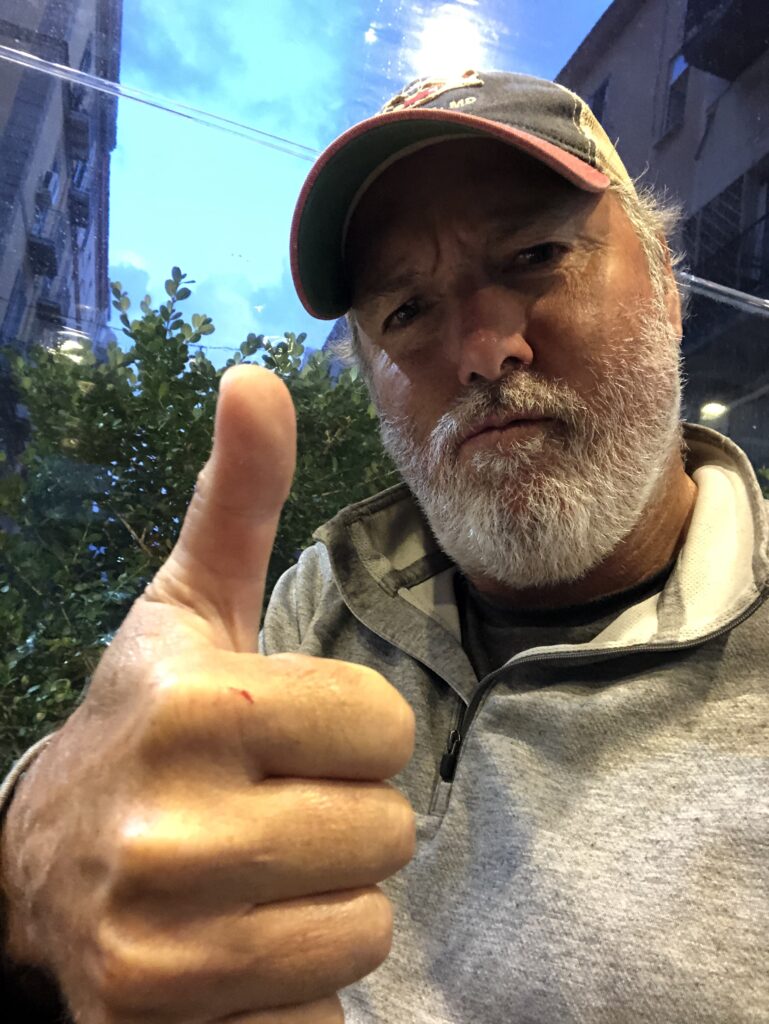On the Via Francigena- Lucca to Bolsena
October 2019- Updated 2023
The first time I visited Tuscany I thought to myself “this is a place I could return to many times without feeling as if I’ve had the same experience twice.” I’ve now completed my third trip to the region and I still feel the same way. Every town, every road and trail, every season brings with it a completely unique view of the countryside, customs, and people, always as fresh and as intense as the first visit. My first trip to Tuscany was to Florence on business. I loved the city and knew instantly I’d be back to visit someday without the baggage of a business trip to worry about. Several years later, I had the opportunity to spend 4 or 5 days in the region while traveling from the Amalfi Coast to Florence on a family vacation. An amazing visit but way to short. On my most recent visit I took a month meandering through Italy initially by train, spending a couple of days in both Lucca and Siena with a day in between hiking the countryside.
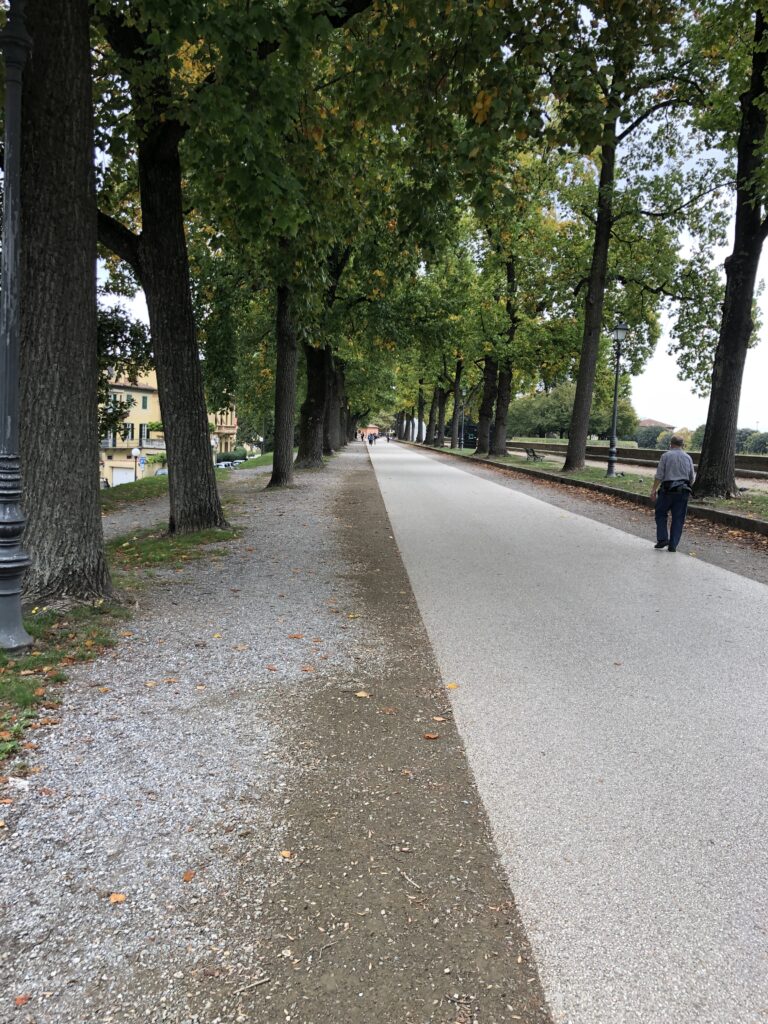
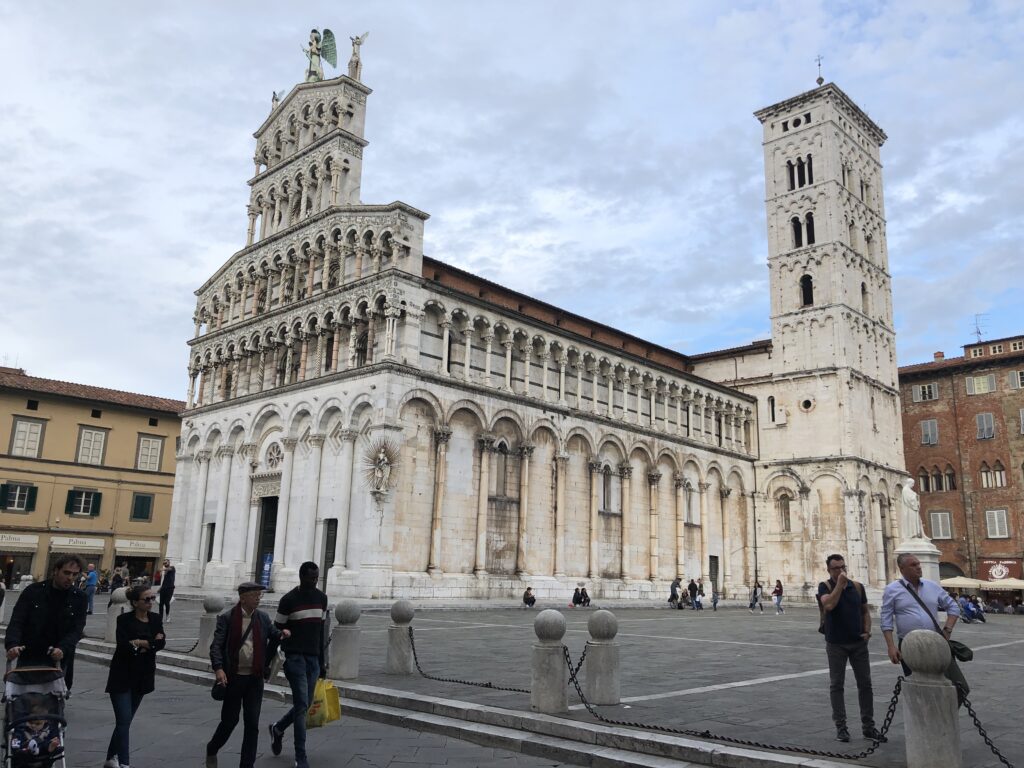
Thought about renting a car and driving through Tuscany until I stumbled across the Via Francigena Pilgrim Trail. While walking through the walled city, I saw a sign advertising the Via Francigena Museum and decided to visit. What I found surprised me. It turns out the Via Francigena is a pilgrim trail which begins in Canterbury England and traverses through France, Switzerland and Italy on the way to Rome. Sigerico, Bishop of Canterbury, documented the trail in his writings over a thousand years ago and much of the trail still exists in one form or another to this day. The more I read about the trail, the more I realized it passed through the heart of Tuscany and connected many of the iconic Tuscan towns in quite manageable stages for hiking. I learned from the Museum Attendant that a “Pilgrim Passport” was available for purchase for 5 euro giving backpackers and pilgrims discounts at restaurants and also access to bunks and hostels run both privately and through the church. There is also an app available for iPhone and Android which contains information on pilgrim accommodation and GPS tracking for the trail (find information at viafrancigena.org). I purchased a Pilgrim Passport and decided then and there to bag the car and hit the trail figuring I could always reassess in a few days if I felt the trail was limiting, unsafe, or physically too hard to enjoy. After the first day of hiking the thought of leaving the trail for a rental car never crossed my mind.
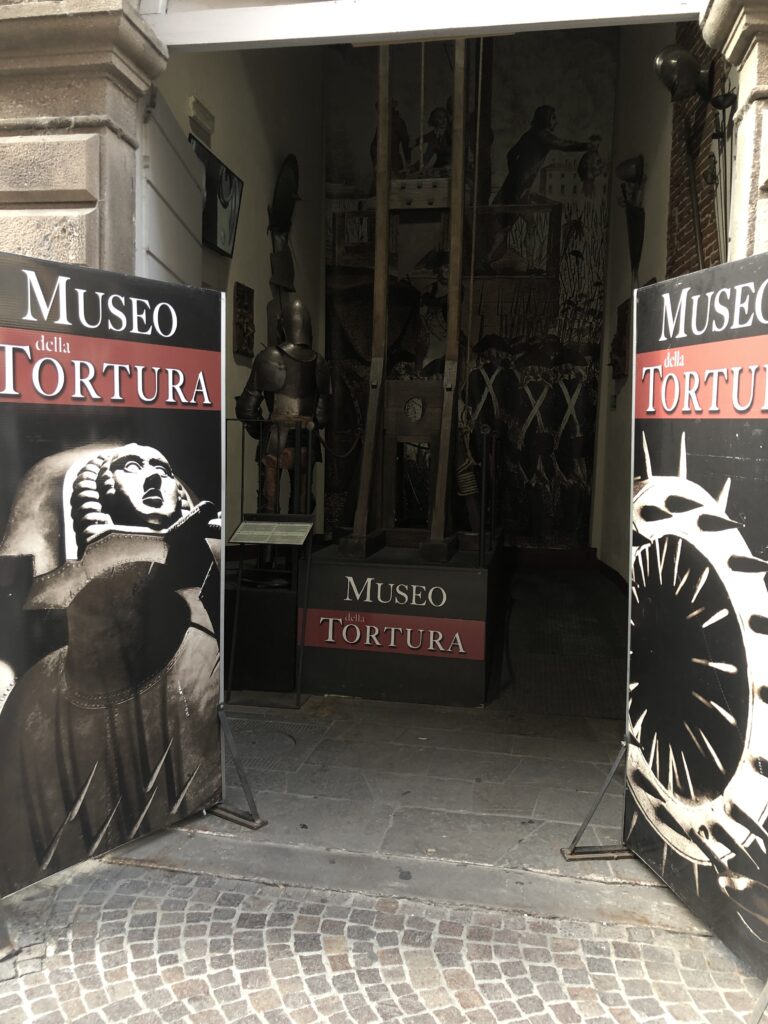
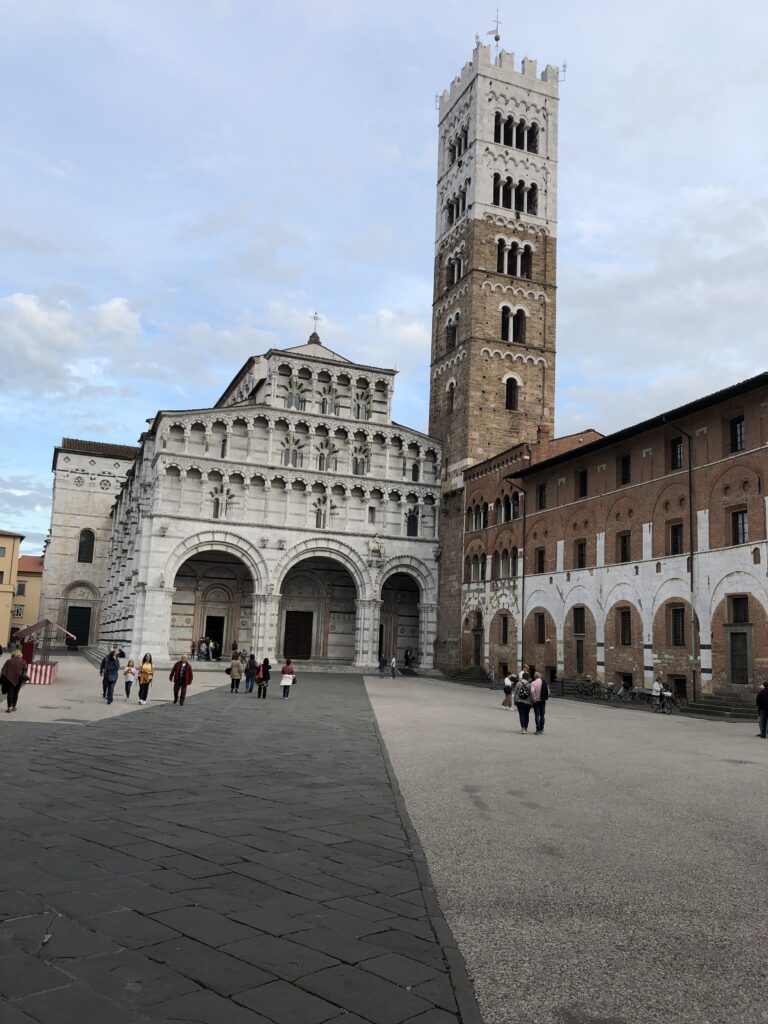
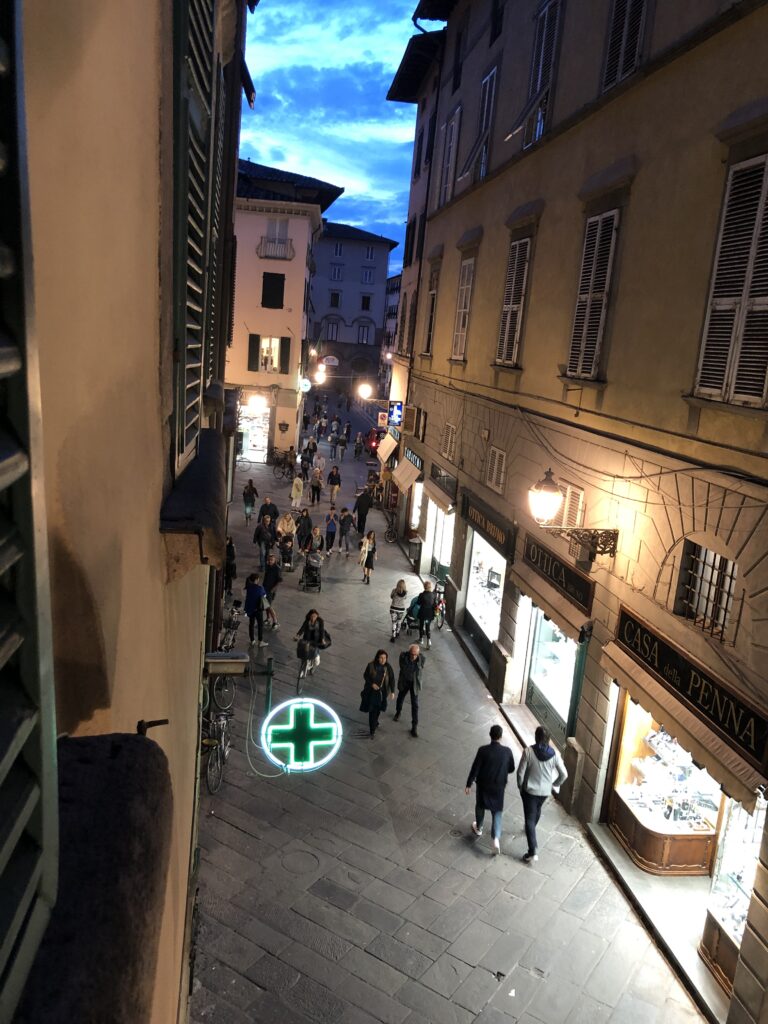
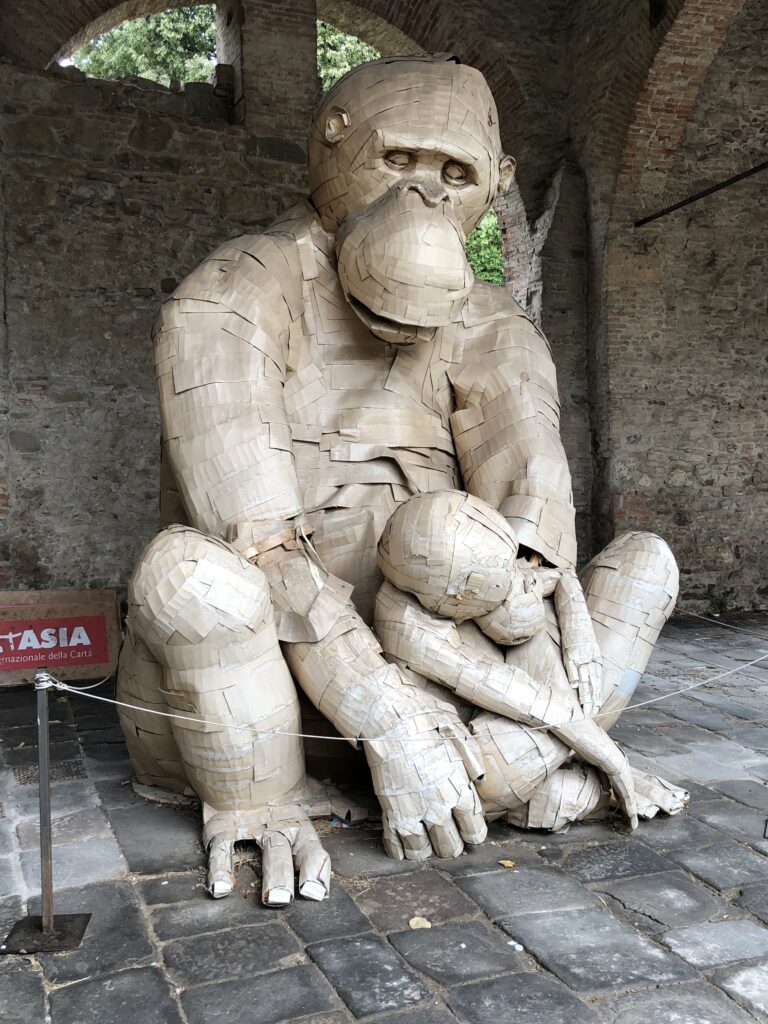
Below you’ll find a description of the 11 trail stages I completed from Lucca until I ran out of time at Bolsena. At some point, I’ll complete the trail from Bolsena to Rome or perhaps I’ll carve out more time and start once again in Lucca with a finish in Rome. I cannot imagine a better way to see Tuscany. Though at times you find yourself on paved road (even some highways of sorts), for the most part you are in the countryside and the views and scenery are stunning. In the evenings, you find yourself in picturesque towns and villages enjoying a cold beer or some of the best Tuscan wines and cuisine available. I primarily stayed in Guesthouse/Bed and Breakfast type accommodations but also stayed in several church accommodations run by the local clergy, a great experience that you should try once or twice. I found the church hostels clean, convenient, and incredibly affordable with he room/bunk charge usually just a 5 euro donation. I visited Tuscany in October and had no trouble finding accommodation without a reservation. For church accommodations, it’s best to call ahead the day before arrival.
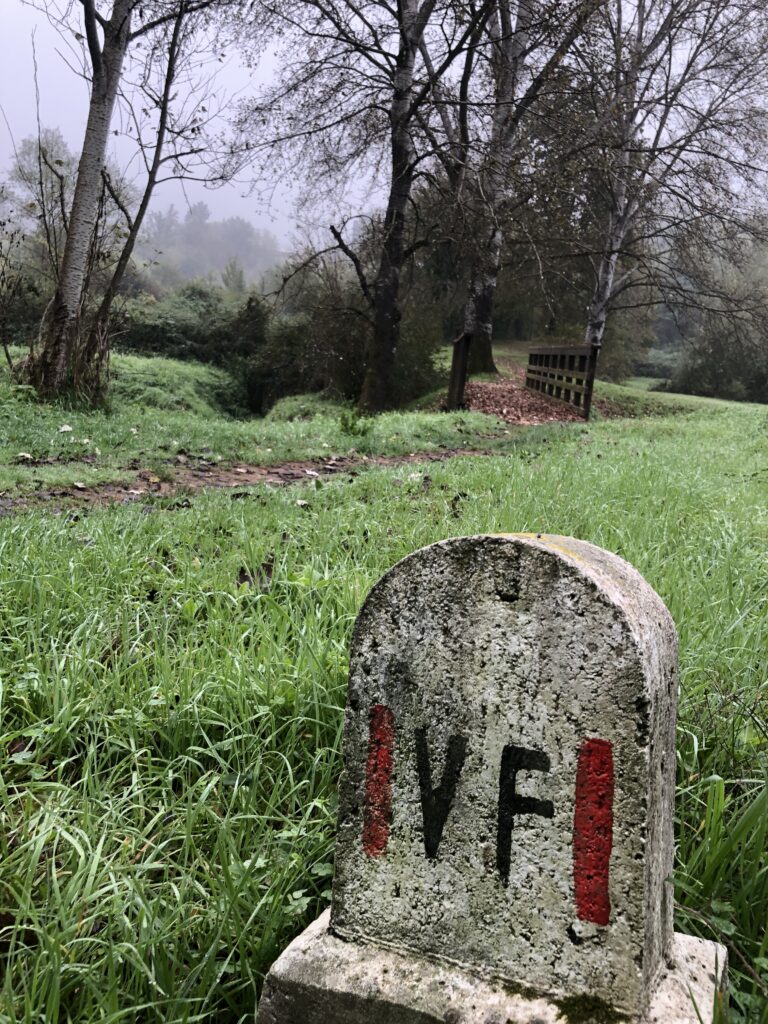


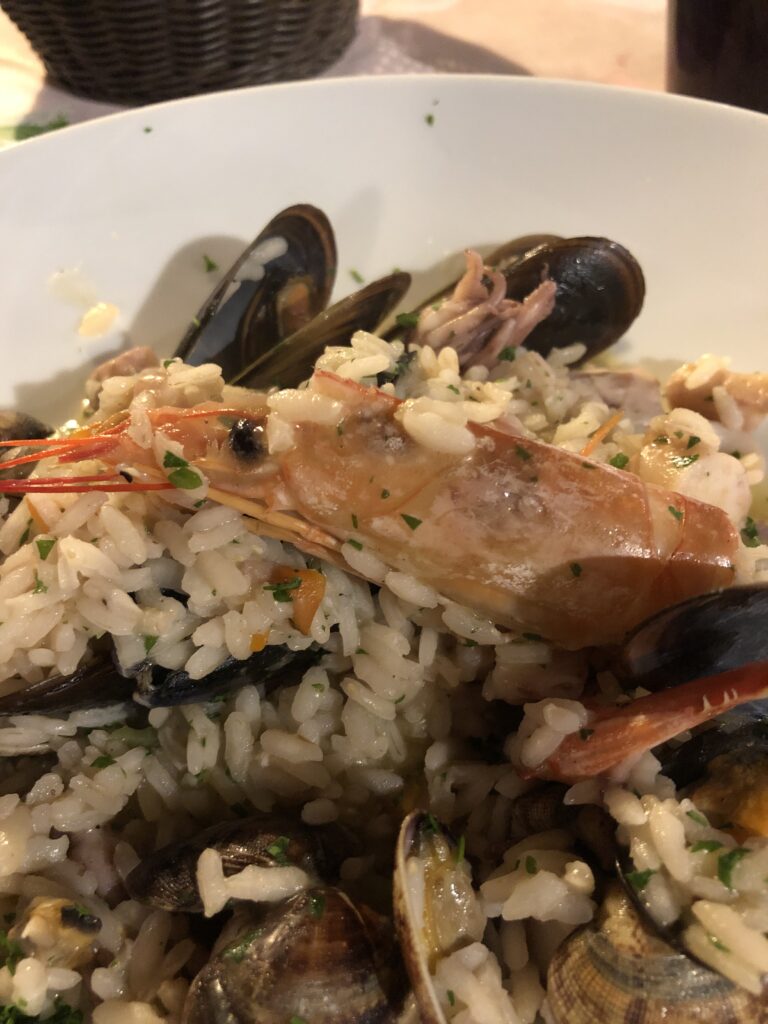
Day 1 Lucca to Altopascio (18km/4hrs)
An easy walk through mostly urban areas. Many of those not hiking the Via Francigena on a true pilgrimage choose to skip this stage by taking the train to Altopascio before beginning the hike. As for me, I enjoyed the walk out of Lucca and through the small towns and villages on the way to Altopascio. Highlights were the Church of San Quirico in Capannori, the Church of Santa Maria in Pocari, and the Church of San Piero in Campo. Once in Altopascio, the Church of San Jacopo is worth a visit before grabbing a beer/wine and some pizza at Pizzeria La Cicaladi Antonio Falivena for dinner.
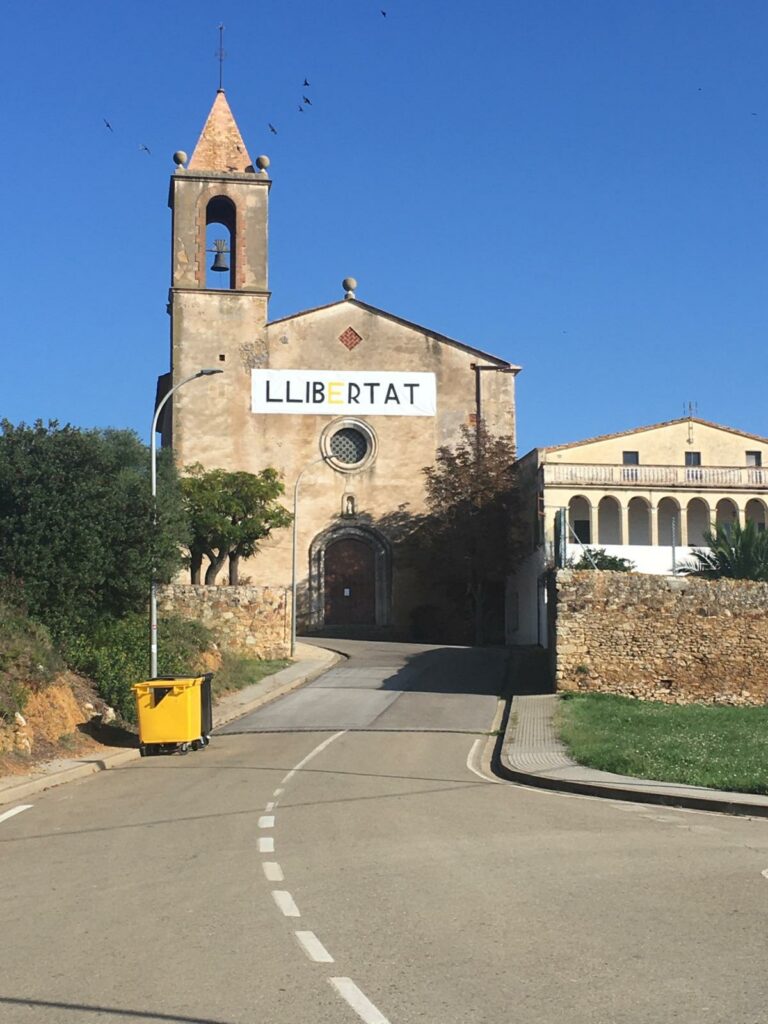
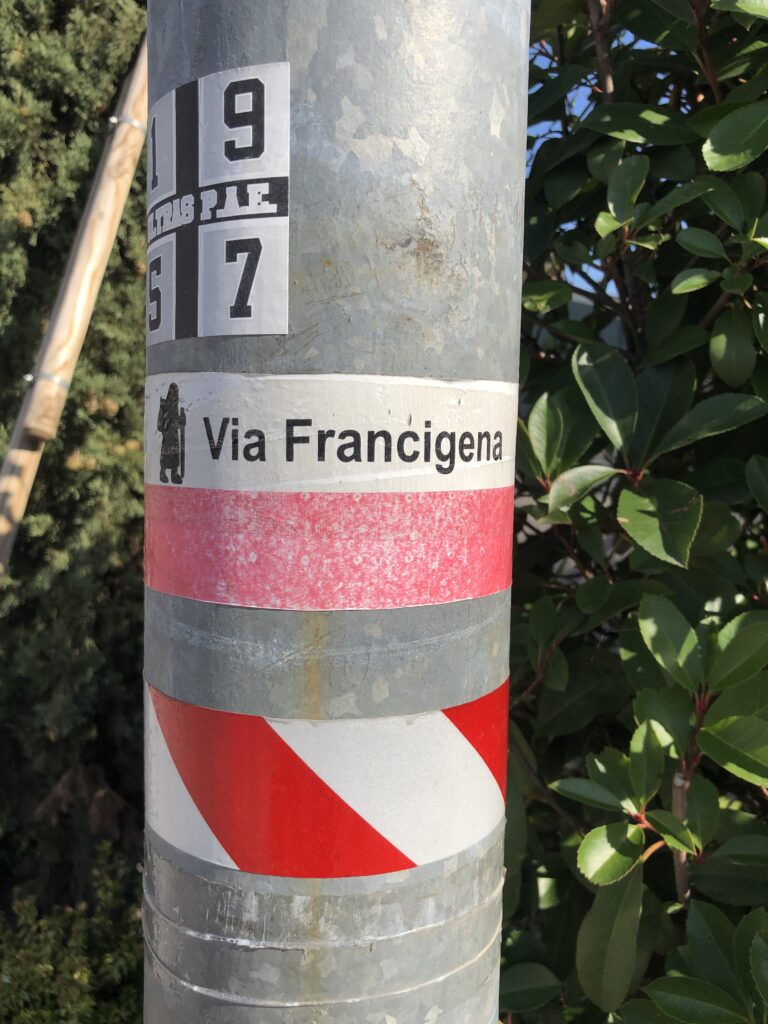
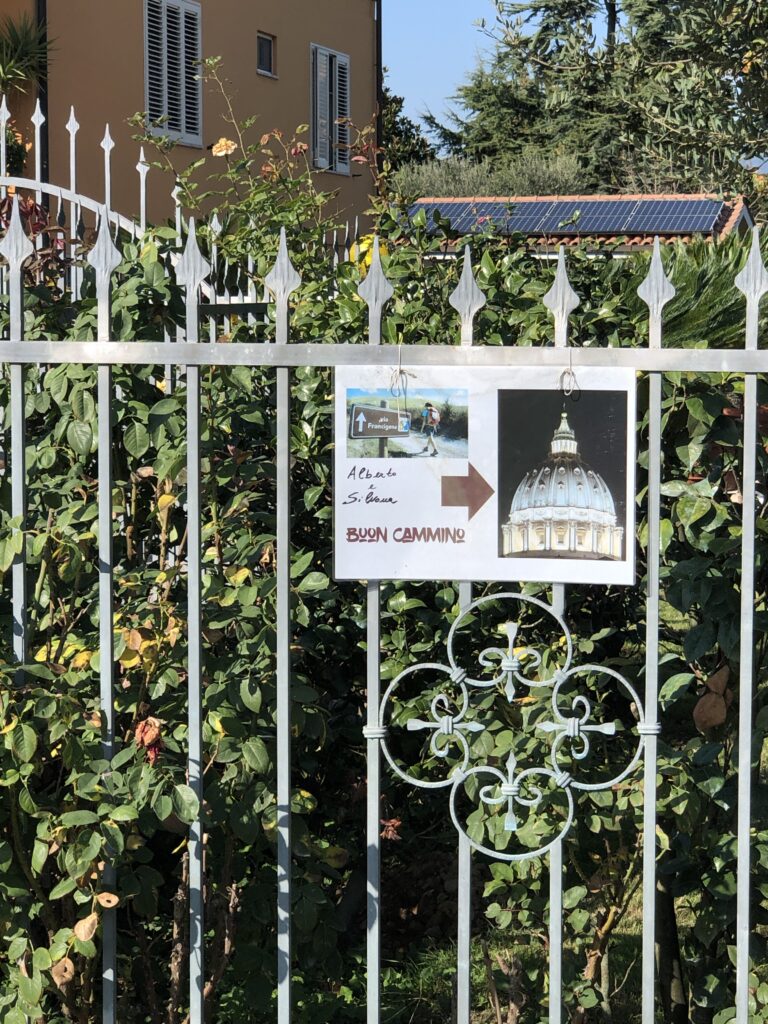

Advice/Ideas- The hike to Altopascio is easy and takes a half a day at most. Rather than getting an early start, consider spending an extra morning in Lucca before heading out. You’ll still have plenty of time for the leisurely hike to Altopascio prior to dinner. If you leave late morning, you’ll pass the restaurant Il Rustichetto, which offers cold beer and a killer fresh bruschetta in a pleasant setting approximately 90 minutes into your hike and just before Capannori. Ensure you have a full water bottle for the second half of the hike as opportunities to purchase water are limited. For beer lovers a late afternoon stop at Topta, a microbrewery located at via Romana 169 just before reaching Altopascio is a must stop.
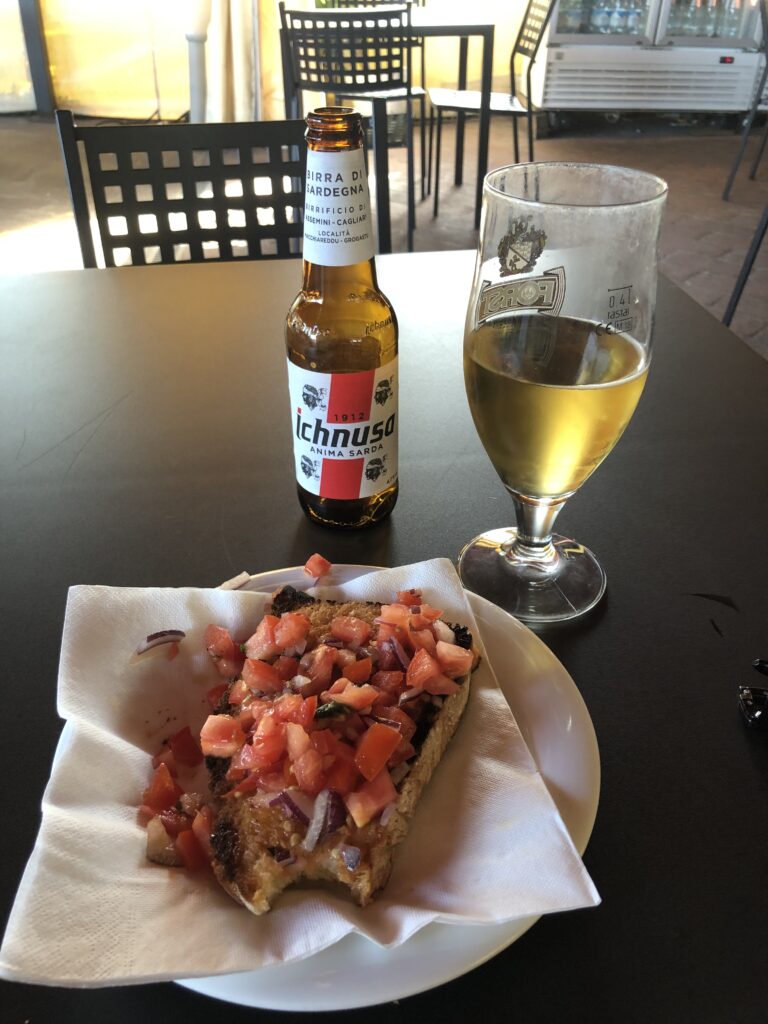

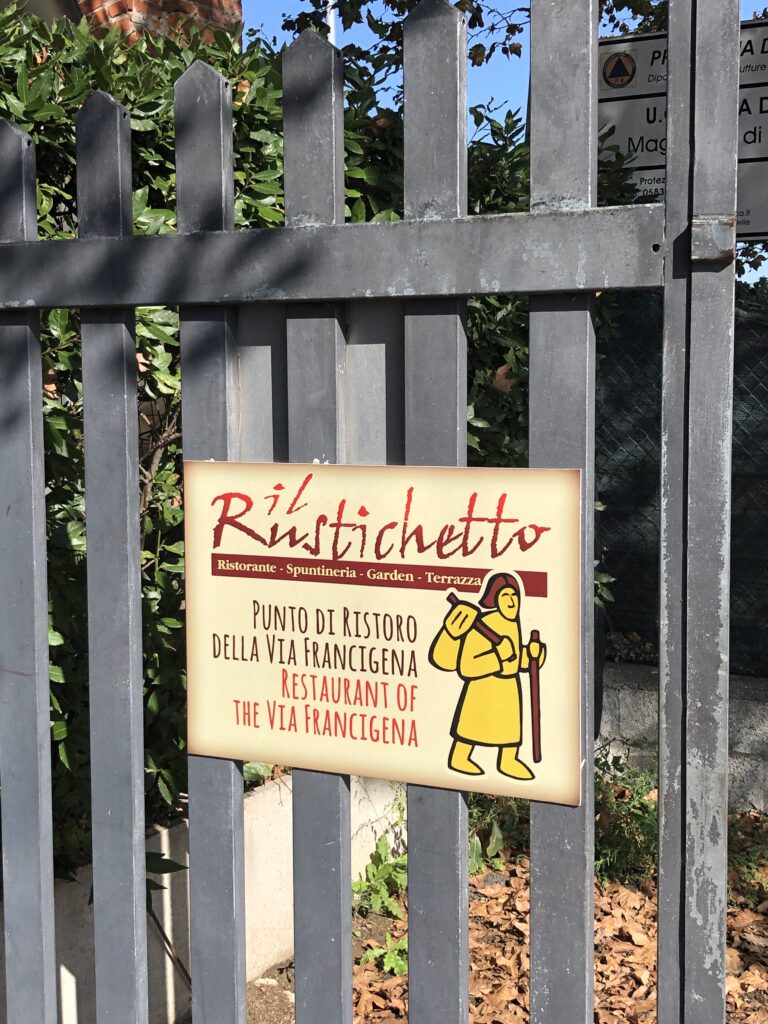
Day 2 Altopascio to San Miniato (25km/6hrs)
The walk is mostly in a valley and will take approximately 6 hours. This offers another great opportunity to sleep in, or to get up early and watch the sunrise in Altopascio, before heading to San Miniato. A mid morning departure will still have you in San Miniato by late afternoon even with a leisurely hiking pace. When leaving Altopascio, you’ll be walking on what’s reported to be the original dirt road of the Via Francigena, through Fucecchio and the hills of Cerbaie. Stop into the Abbey of San Salvatore in Fucecchio and also visit Castlefranco di Sotto. The Colligiate Church of San Pietro and San Paulo is a main attraction, and time permitting, the churches of San Matteo and La Badia are also worth a visit. In addition, there is a fine archeological site in the center of town. Cross the River Arno and head into the picturesque fortress city of San Miniato. Located atop a hill, San Miniato is known for its unique historical significance as well as its precious white truffles. Must sees include the Piazza del Popolo, church of San Domenico, Piazza del Duomo, and Torre de Matilda (Matilda’s Tower). Also known for its culinary delights, San Miniato is a great stop for the foodies among us.
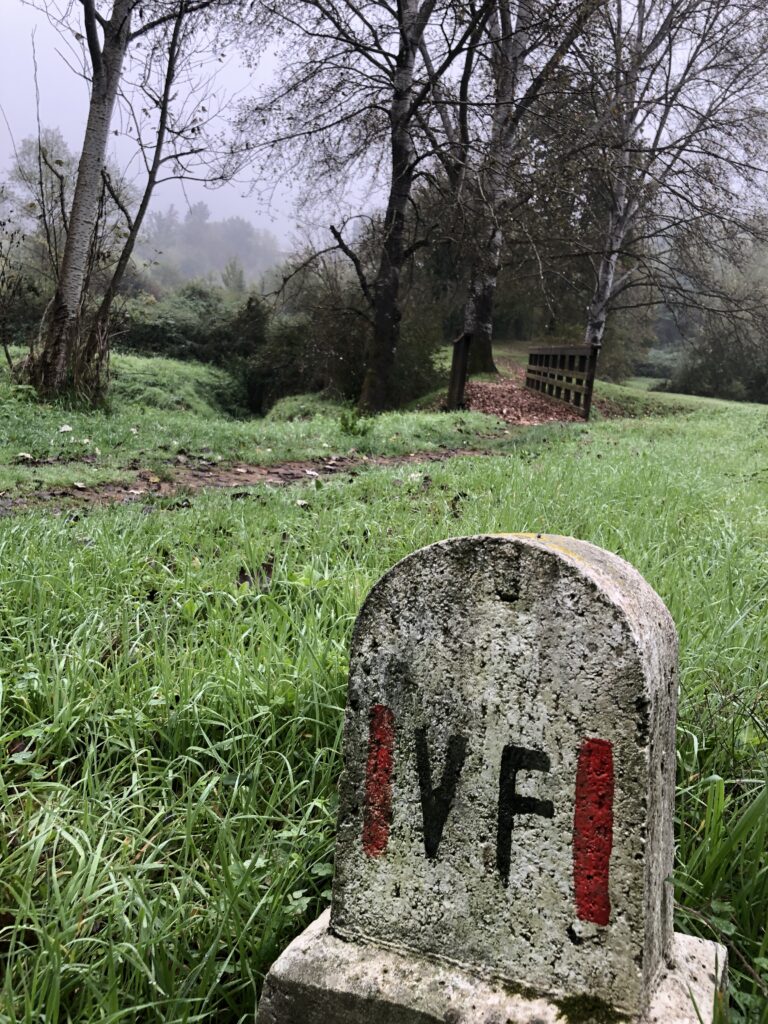
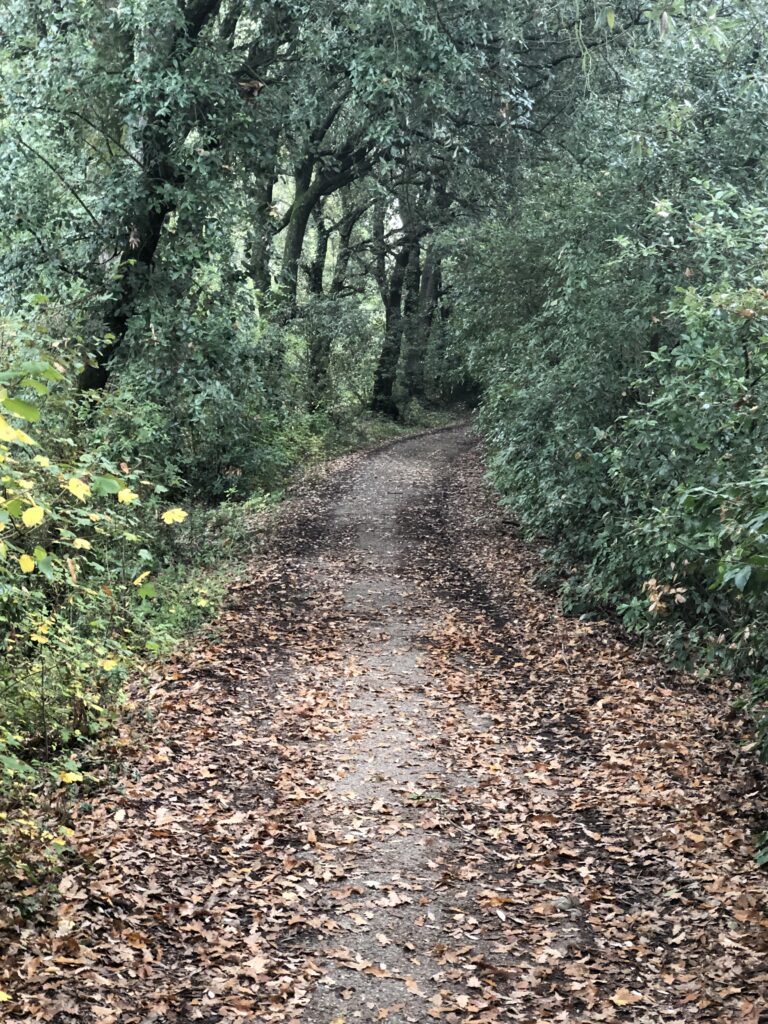
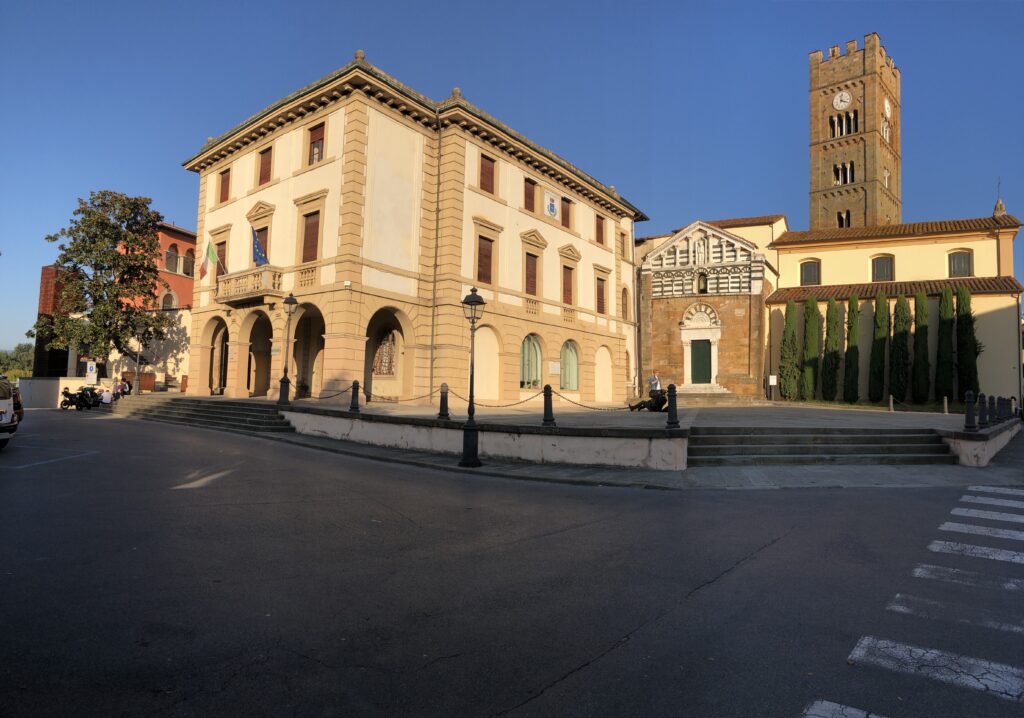
Day 3 San Miniato to Gambassi Terme (24km/5.5hrs)
Though a shorter hike at 24 km, it’s rated as “hard” most likely due to an increase in hills. Still, it is not very difficult and there is no need for urgency on the hike. The departure from San Miniato is mostly on paved road but within an hour or so you’ll be on footpaths through the beautiful rolling hills of Val de Elsa. Passing through Castelfiorentino, make sure to stop in the Benozzo Golloli Museum, home of the religiously significant Tabernacle of Madonna della Tosse and the Tabernacle della Visitazione. On the hike to Gambassi Terme you pass through the small town of Montaione, home of the Civic Museum which is a worthwhile place to take a break.
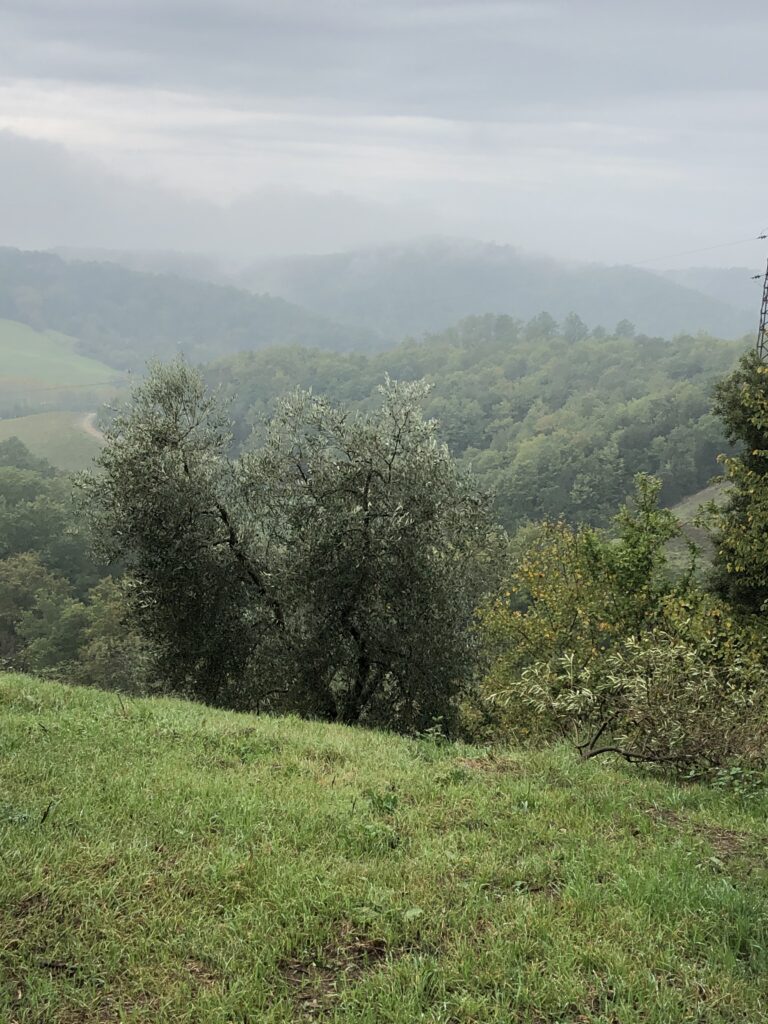
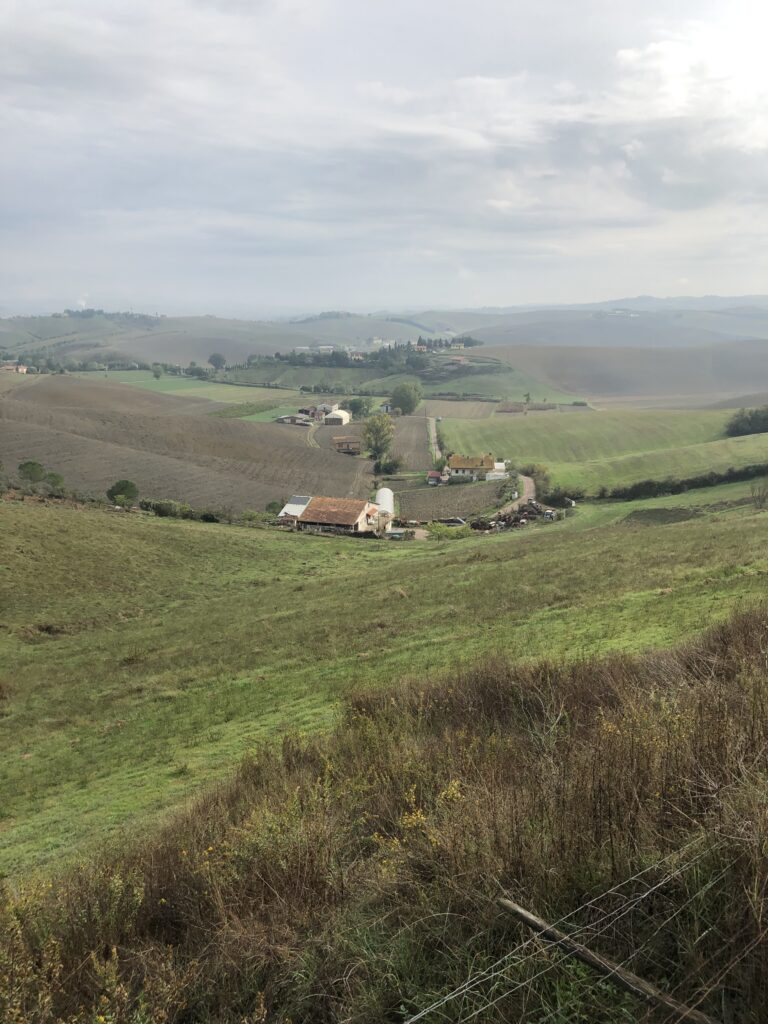
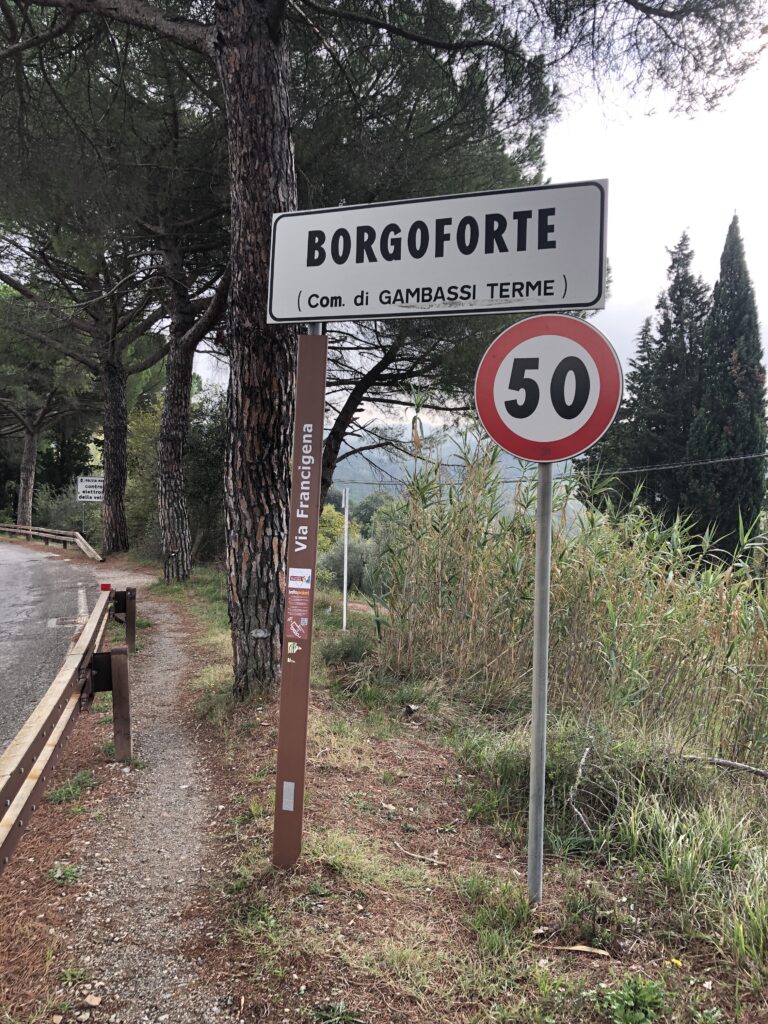
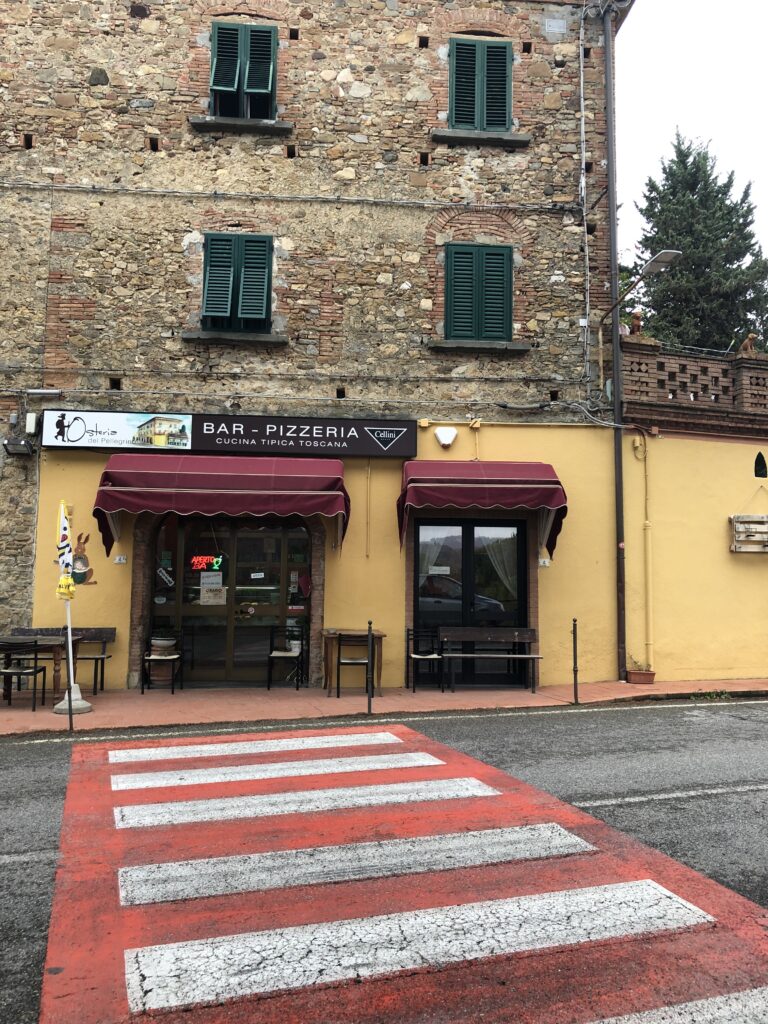
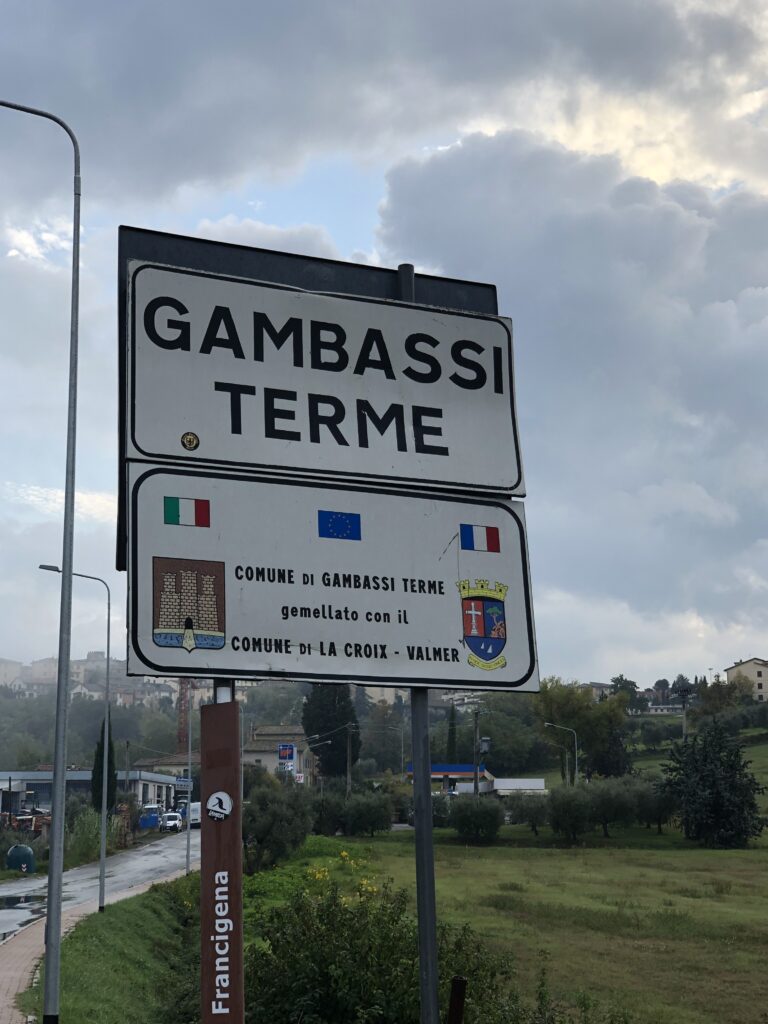
Day 4 Gambassi Terme to San Gimignano (13km/3hrs)
By far the shortest leg of this itinerary, the hike from Gambassi Terme to San Gimignano is quite relaxing. The hike is dominated by the hills and ridges of the Val de Elsa and the route is dotted by unique looking structures. San Gimignano is a very popular tourist destination and a great place to spend an afternoon exploring the 15 towers within the city while watching the tourists pour out of buses. The approach to San Gimignano offers fantastic picture opportunities. Also known for Vernaccia Wine, San Gimignano is a great spot to enjoy an afternoon wine or beer after a solid day of hiking and sightseeing.
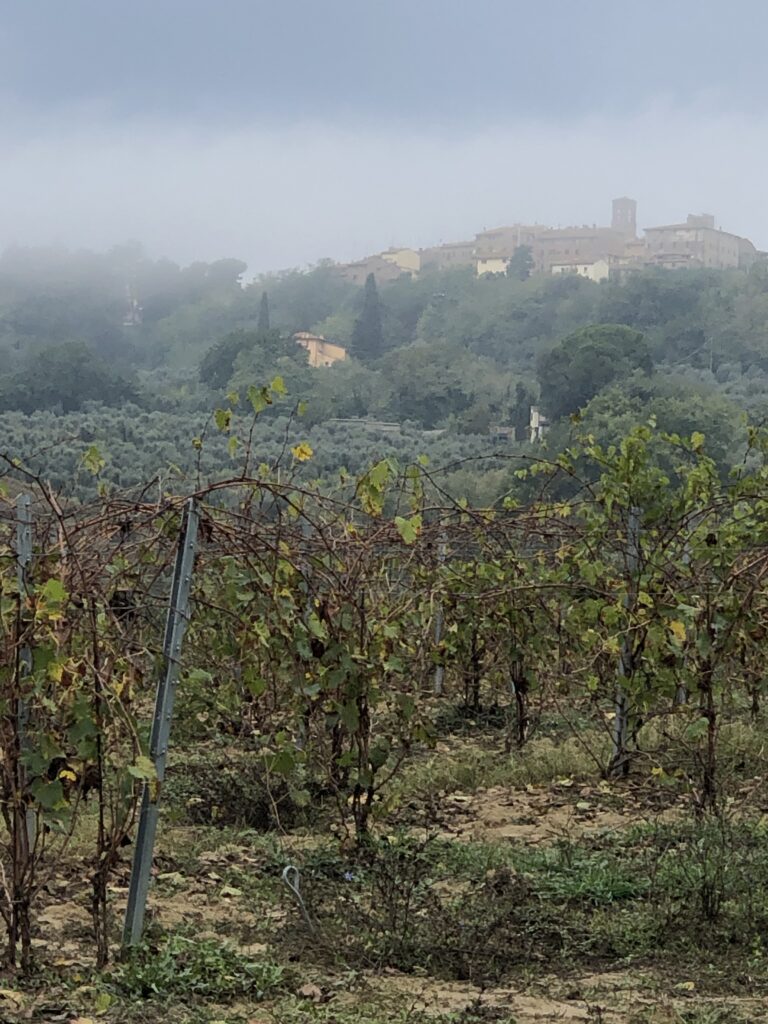

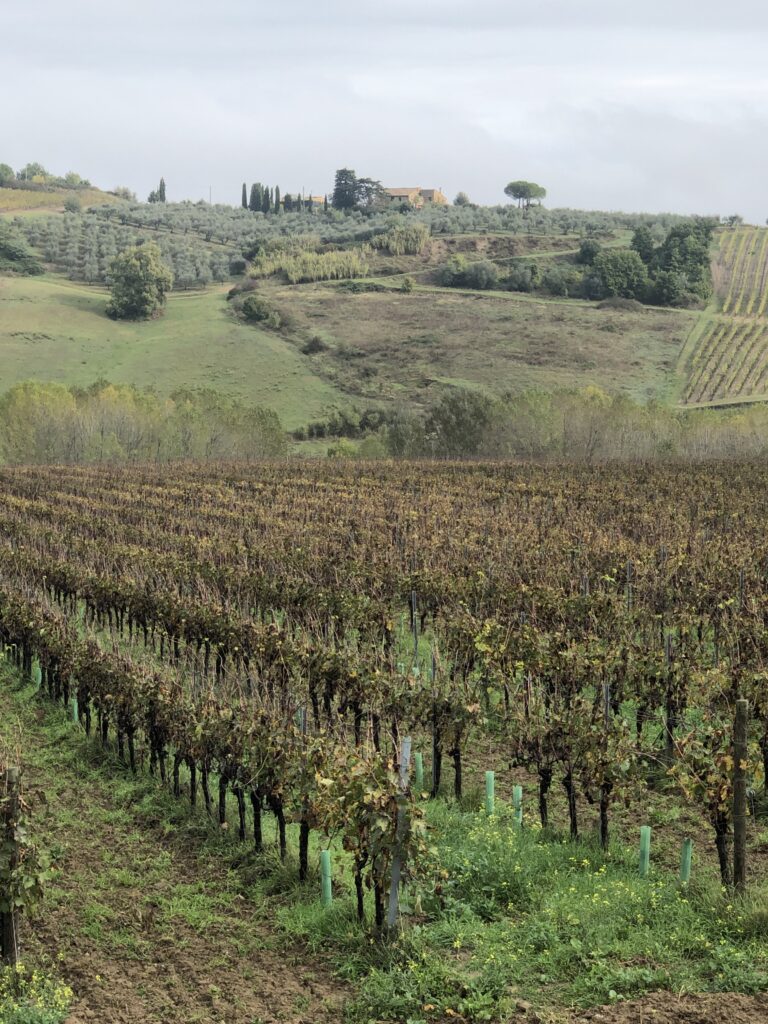

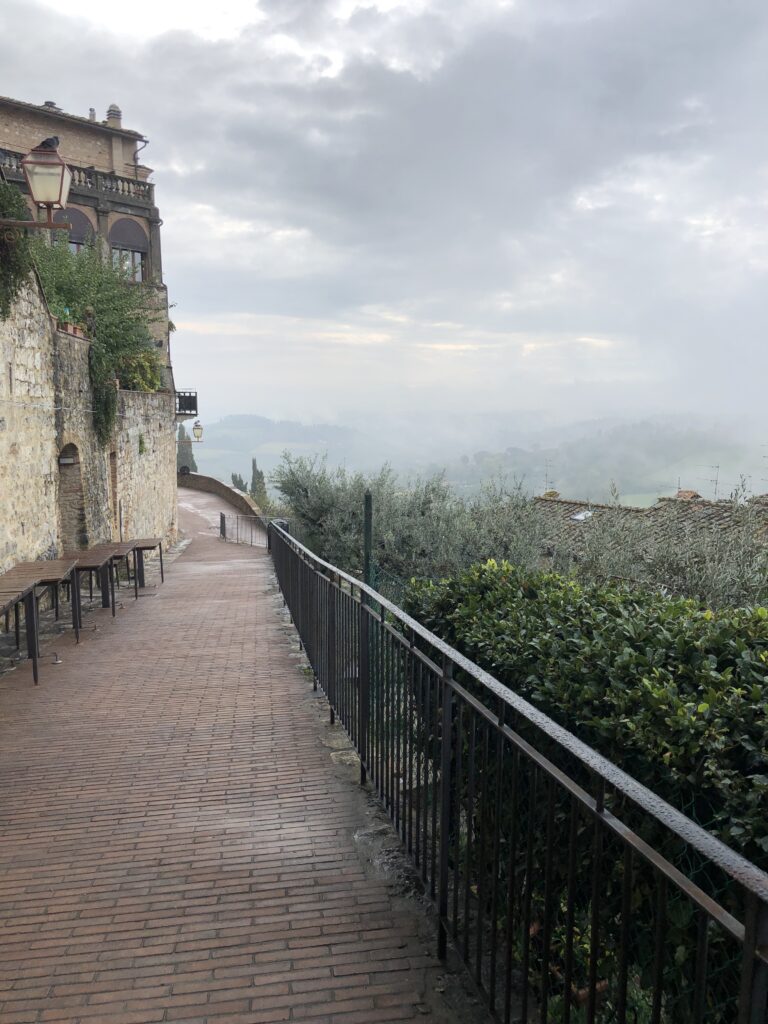
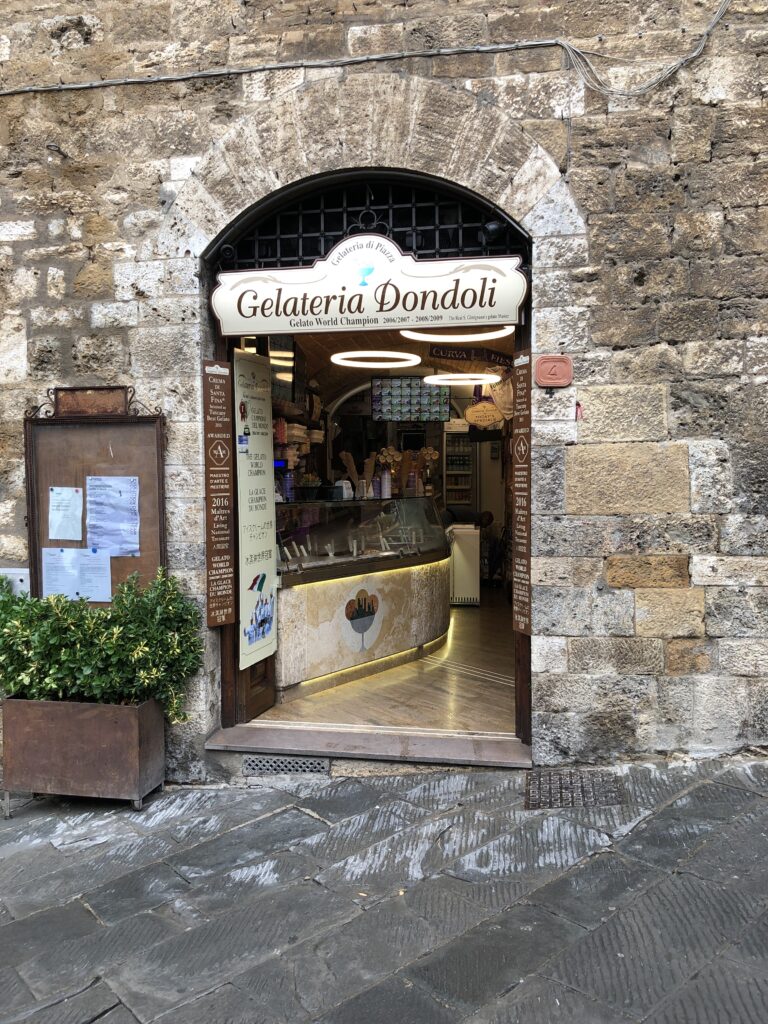
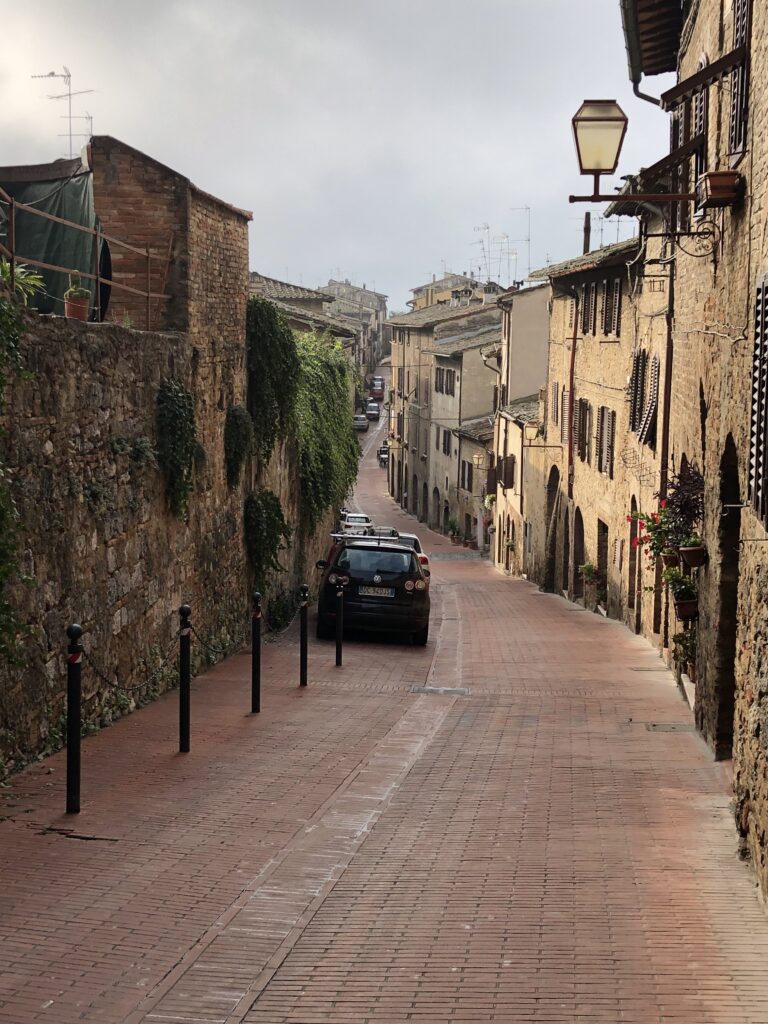
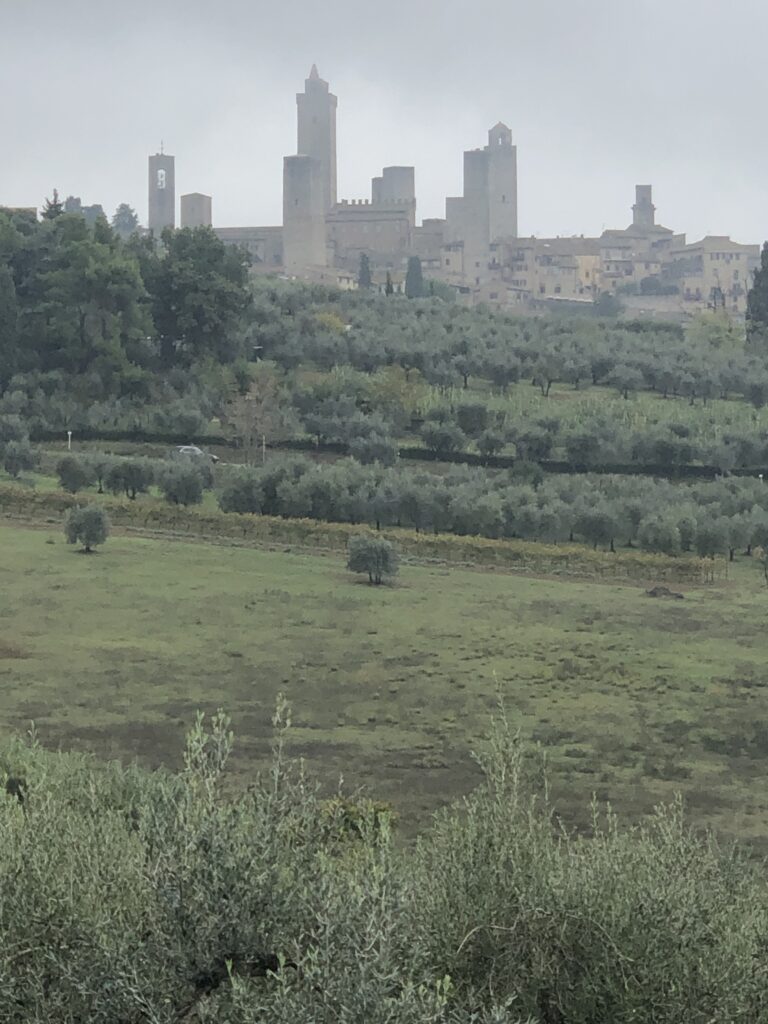
Day 5 San Gimignano to Monteriggioni (30km/7hrs)
One of the best sections on the route from Lucca to Bolsena, you will pass through one of the most beautiful sections of Tuscany. Make sure to look back on San Gimignano as you hike out of town for some picturesque views of the town. The section is about 30 km and takes 7-8 hours to complete. Approximately 12 km from San Gimignano you will come to Colle Val de’Elsa, a medieval town with a mixture of ancient and modern architecture. A nice spot for lunch and to take a quick look around, be sure to take in the Conservatory of St Peter and the Convent of St Francis. Both are located in the upper town (Colle Alta) along with the Piazza Bajos where you will see ancient homes along with older palatial buildings of significance. The next 15-16 km make for a very pleasant hike ending with Monteriggioni and its splendid castle.


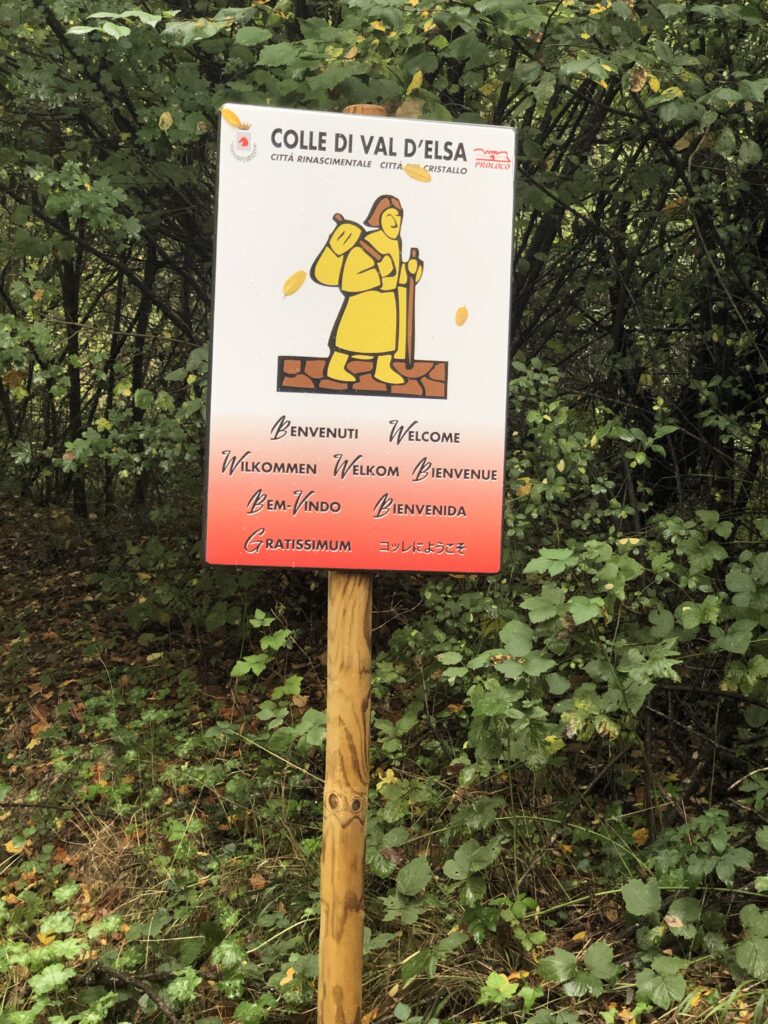
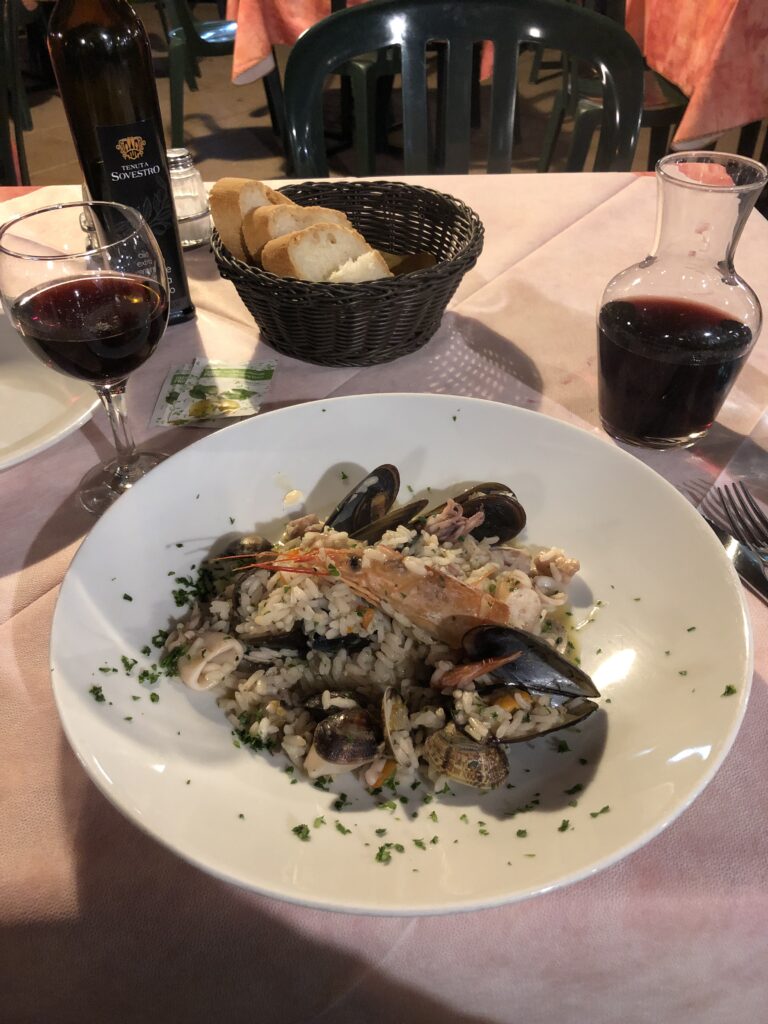
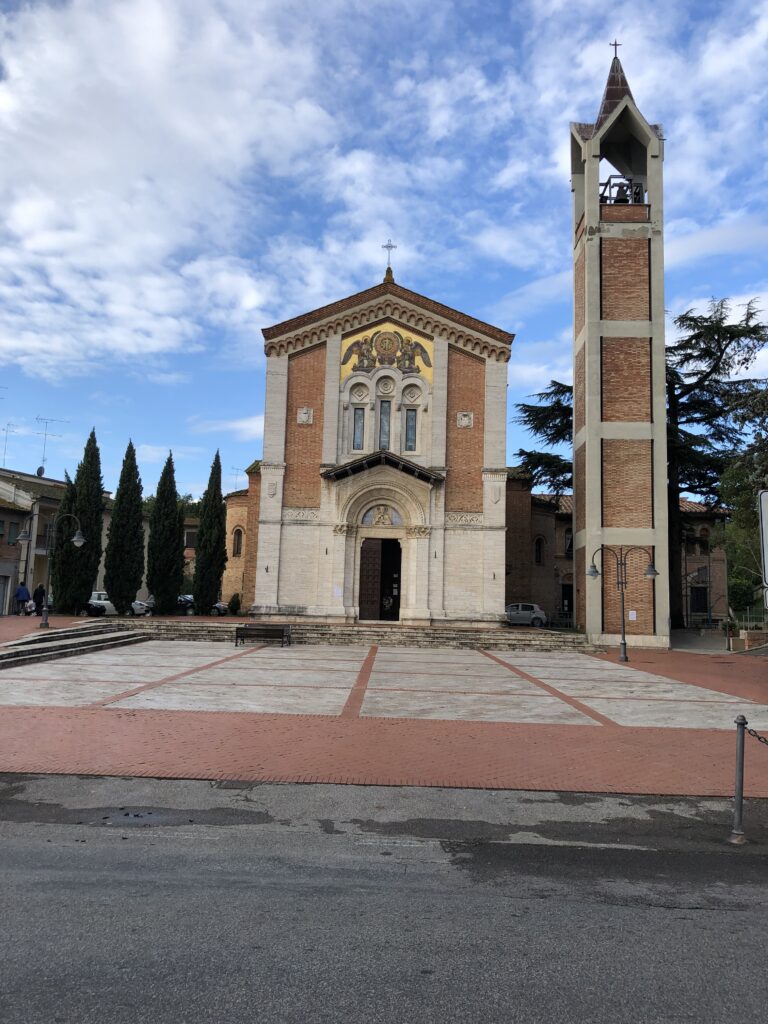
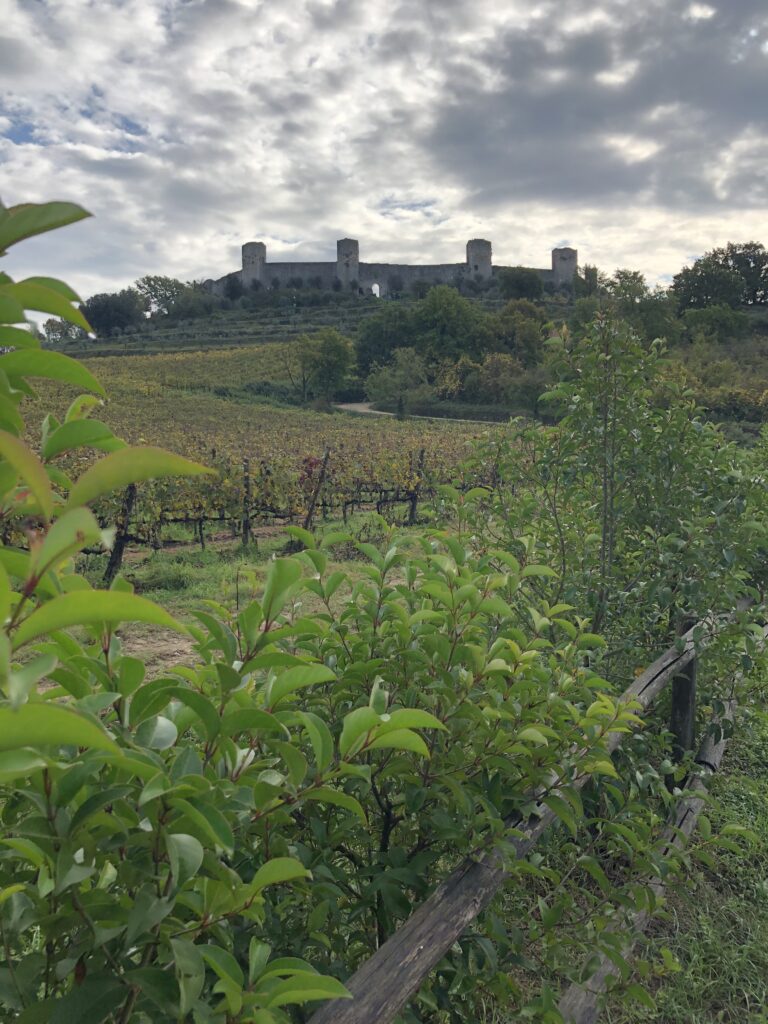


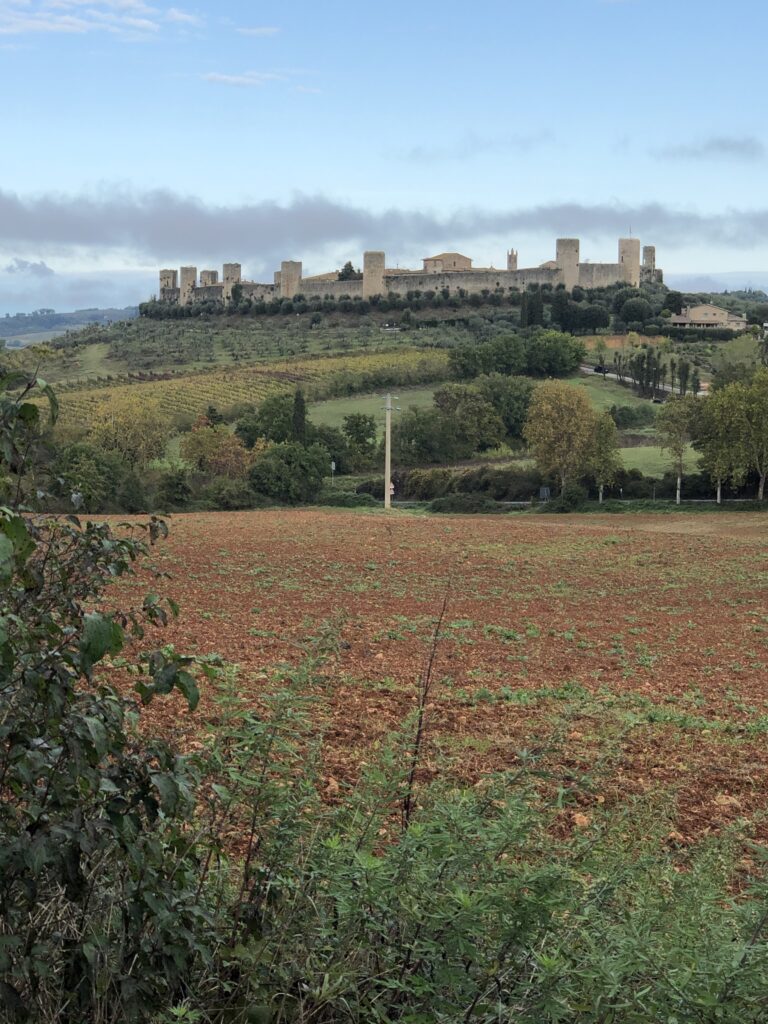
Day 6 Monteriggioni to Siena (21km/6hrs)
An easy 21 km trek from Monteriggioni to Siena leaves the options of sleeping in, getting up early to explore Monteriggioni, or getting an early start to Siena which is far and away the most interesting stop on this part of the Via Francigena. Best to pack a lunch and carry water on this section as there are not many places to eat along the way. The trail to Siena passes through wooded forest and past the very pretty Castle of Chiocciola. Enter Siena via the traditional entrance of Porta Camollia and make your way to the Piazzo del Campo which twice a year in July and August is transformed into a medieval horse track for the Palio de Siena. There you’ll also find great options for a well deserved beer and a good meal. There are many sites in Siena so if you have the time or need a day off to energize, Siena is the place to take advantage. Be sure to visit the Doumo, Palazzo Pubblico (Palace) and Tower of Mangia, and the Hospital of Santa Maria del Scala (Museum). Have lunch at Bar Il Palio and try the wild boar, or enjoy Siena’s best pizza at Piripi Pizza Urban Food (some good craft beer!) or Pizzeria la Trofea (good, cheap, and centrally located).

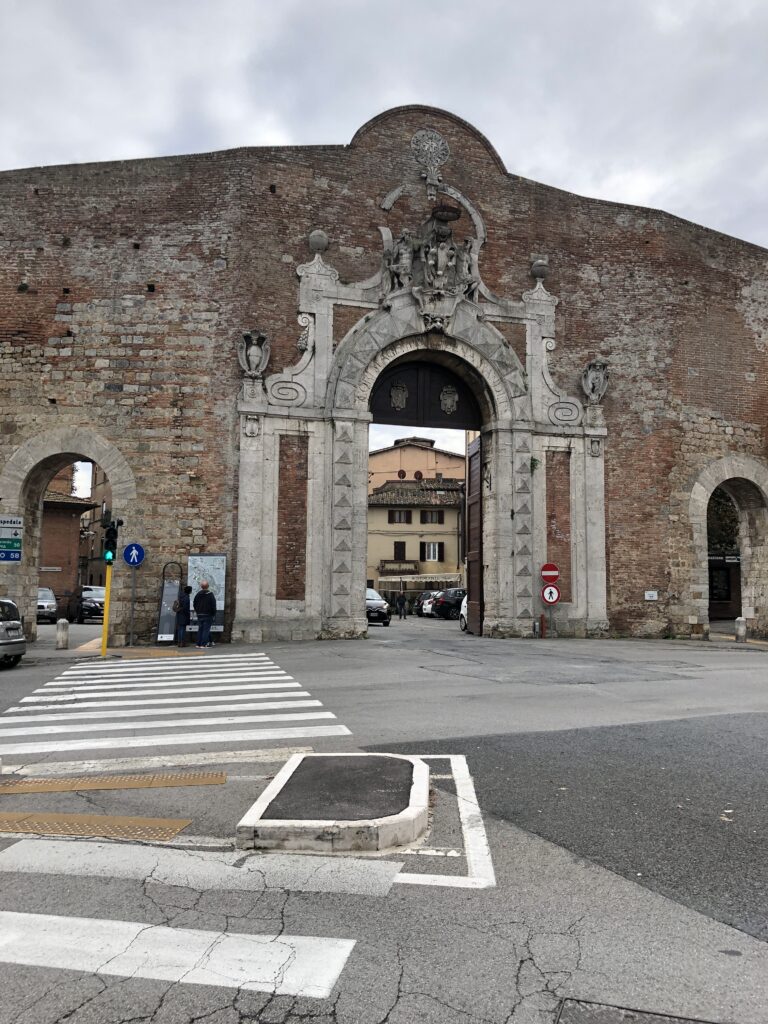

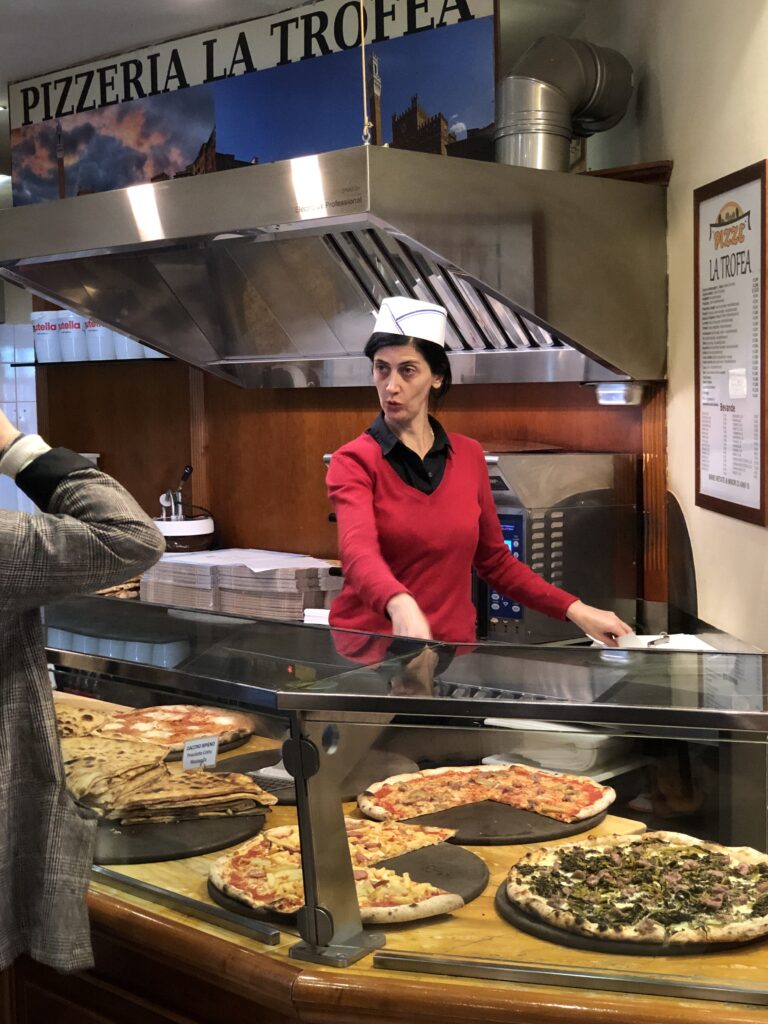
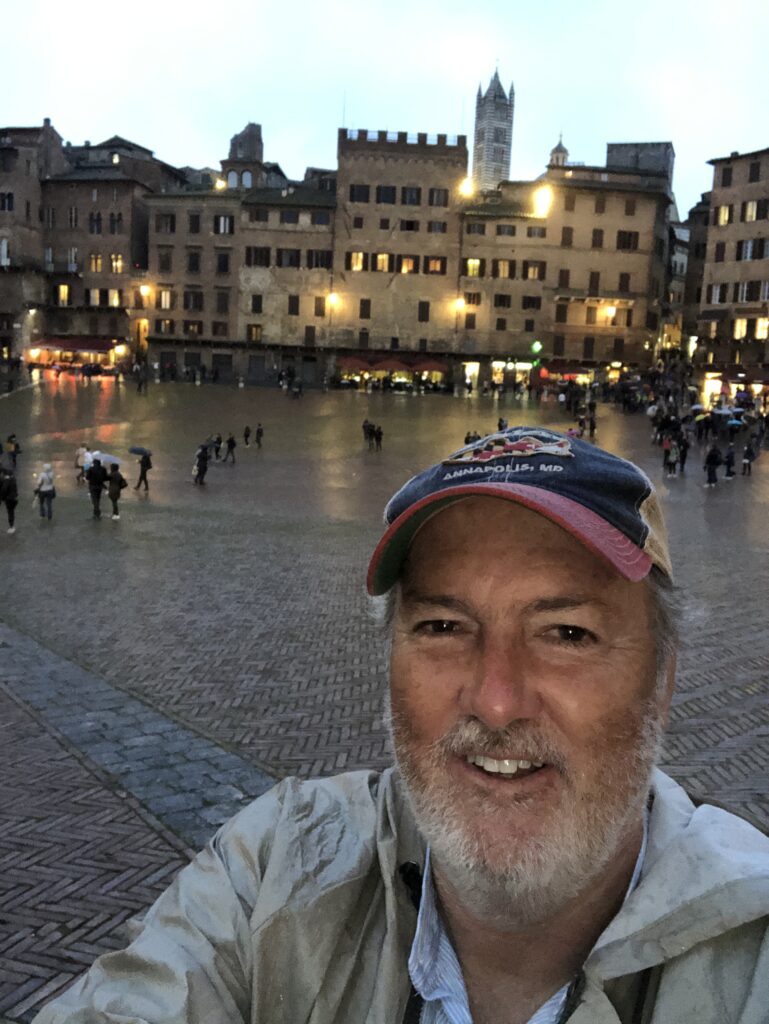
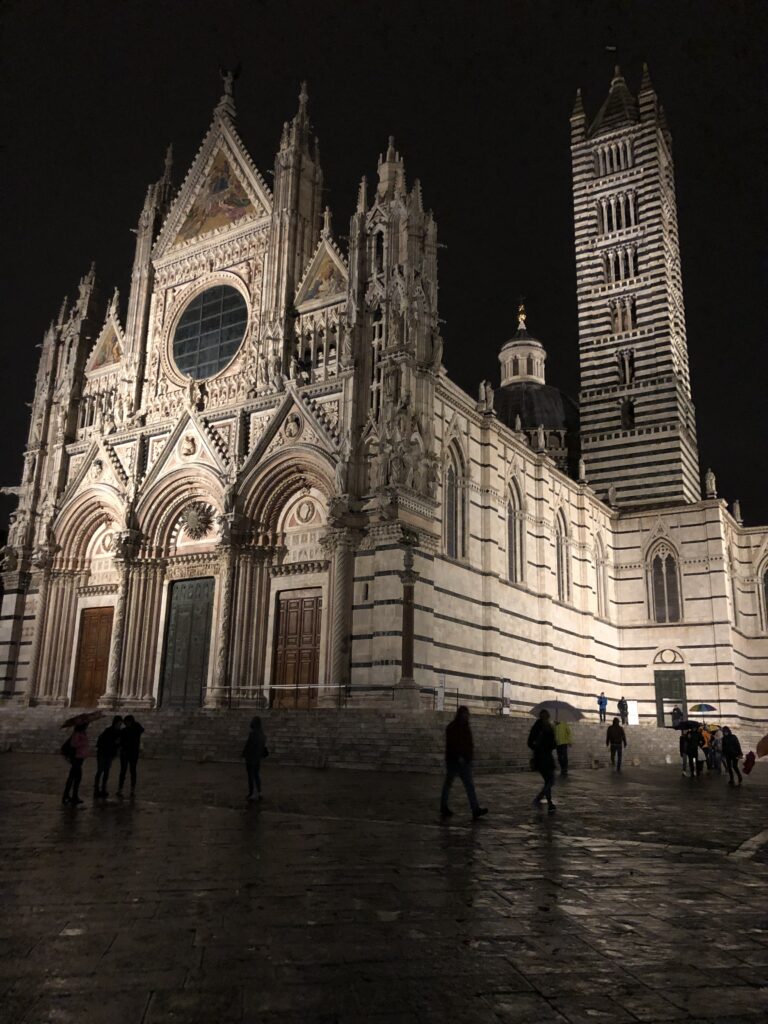

Day 7 Siena to Ponte d’Arbia (30km/7hrs)
At approximately 30 km, this is one of the longer sections of the trek, and also one of the most varied. At times during this section you’ll find yourself on country roads, dirt paths and trails, and walking along railways. After leaving Siena via the southern gate of Port Romana you pass through a more modern urban area of Siena and make your way through the village Isola d’ Arbia. At this point you’ll begin to be rewarded with rolling hills and green fields, along with interesting sites such as the Grancia di Cuna, an ancient fortified farm (where you can find water). The trekking is easy with many opportunities for pictures of the beautiful landscapes in the foothills of the Crete Senese. Looking back, you can still see nice views of the Siena skyline. Ponte d’ Arbia is a very small village which seemed to consist of a bridge, handful of buildings, and at least one bar where you can find a cold beer and a bite to eat. Call ahead for Pilgram accommodations particularly if you’ve been hiking among a larger group of Pilgrams. I stayed at the Centro Culturale L Christi without issue while traveling in October.
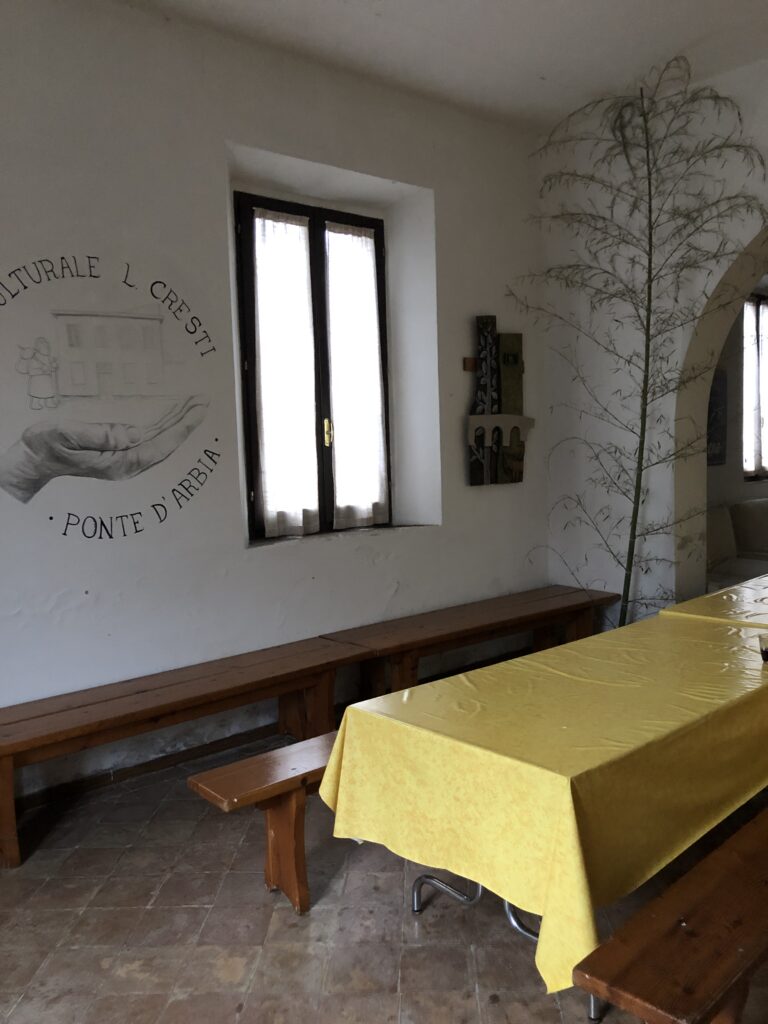


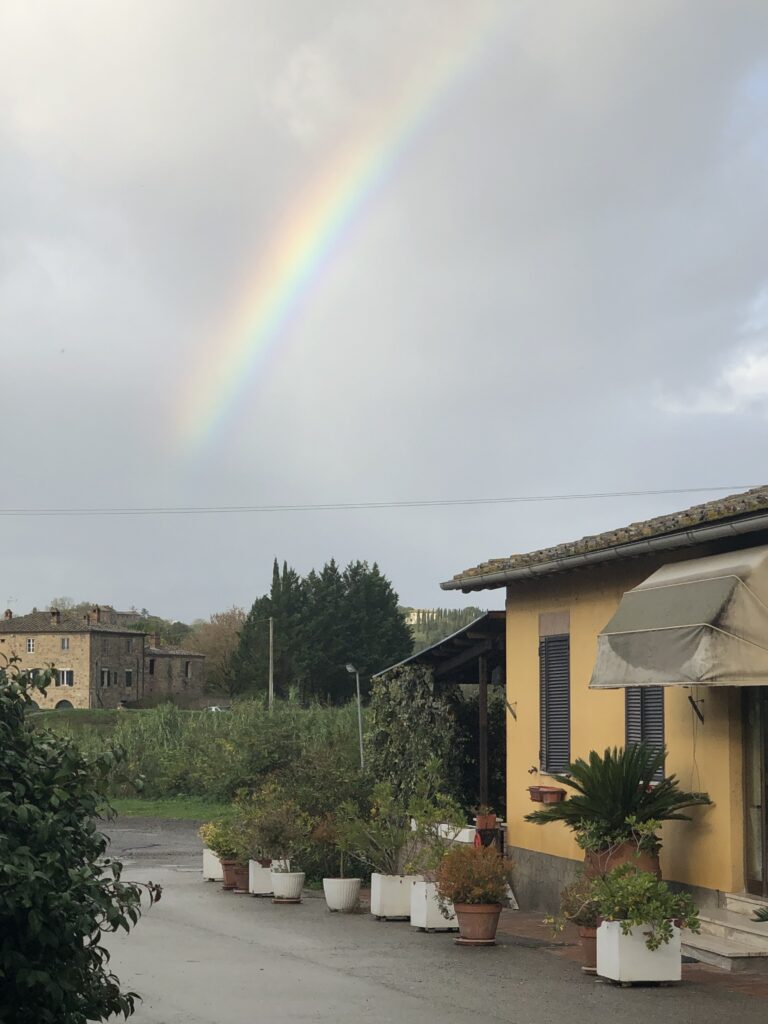
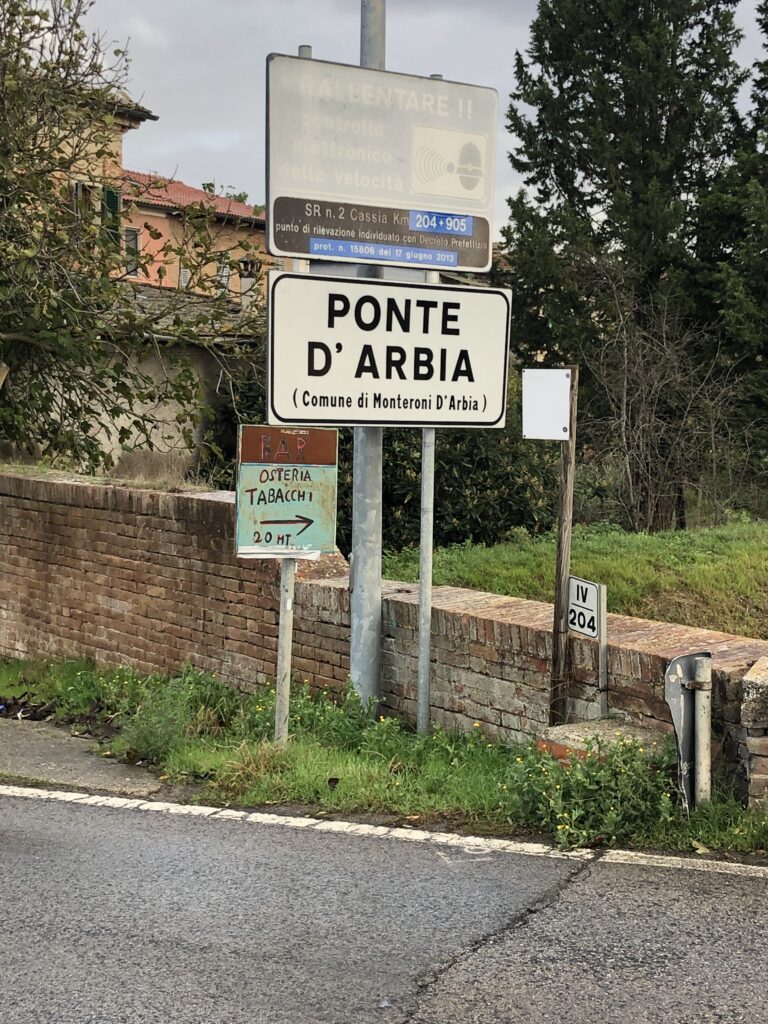
Day 8 Ponte d’Arbia to San Quirico (27km/6hrs)
As with the previous section, opportunities for stunning pictures are plentiful as you trek through Bounconvento and the beautiful Val d’ Orcia. The hike itself is moderate with rolling hills, green fields, and vineyards. Hopefully, you experience it on a sunny day as its one of the most pleasant sections of the journey. Located right on the trail, the walled town of Bounconvento is worth strolling through. Spend some time grabbing a late breakfast or lunch and check out the Art Museum at Via Soccini 18 as well as the Chiesa dei Santi Pietro and Paolo (church). You can also visit the Farming Museum located at Piazzale Garibaldi. Via Soccini also represents the town center and is where most restaurants and cafe’s can be found. Having a train station, Bounconvento is also a convenient point if you’re planning on terminating your hike early or returning to Siena. Hiking South out of Buonconvento offers some nice views of landscapes and nearby towns. Take an afternoon break at the Winery Carparzo and enjoy the Pilgram Special consisting of a ham sandwich, a glass of wine, and a bottled water for the road! Rolling into San Quirico, make sure to stop at Birrificio San Quirico for a beer and to check out the brewery! The Amber Beer Jelly with Chilli Pepper is fantastic!
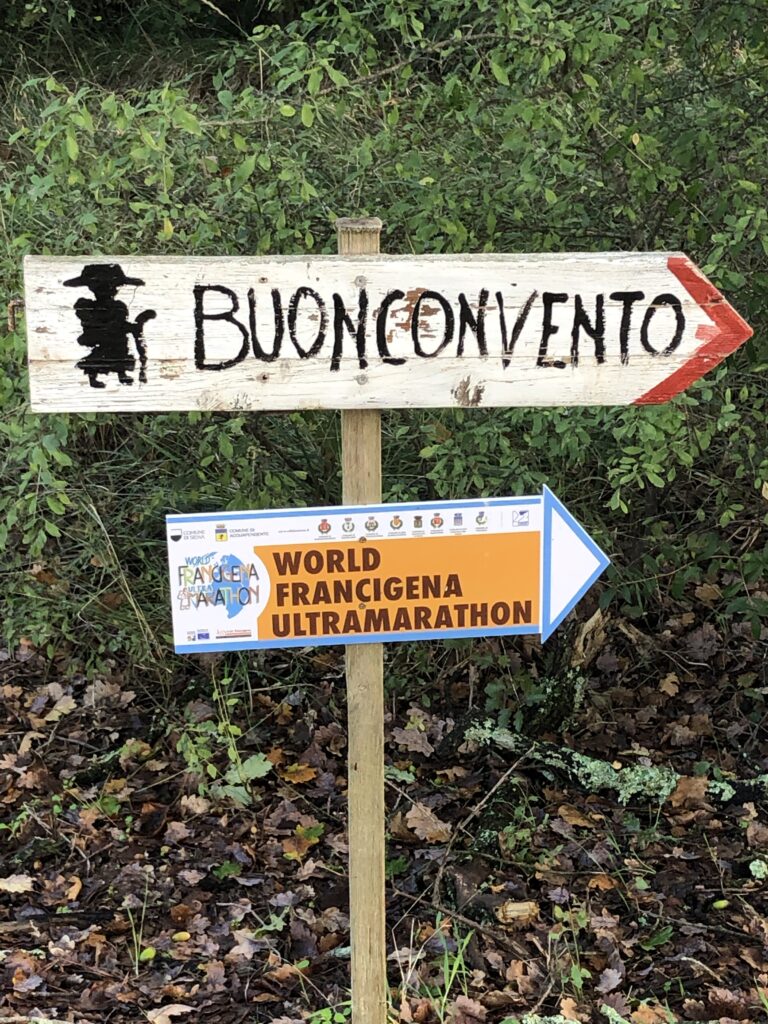
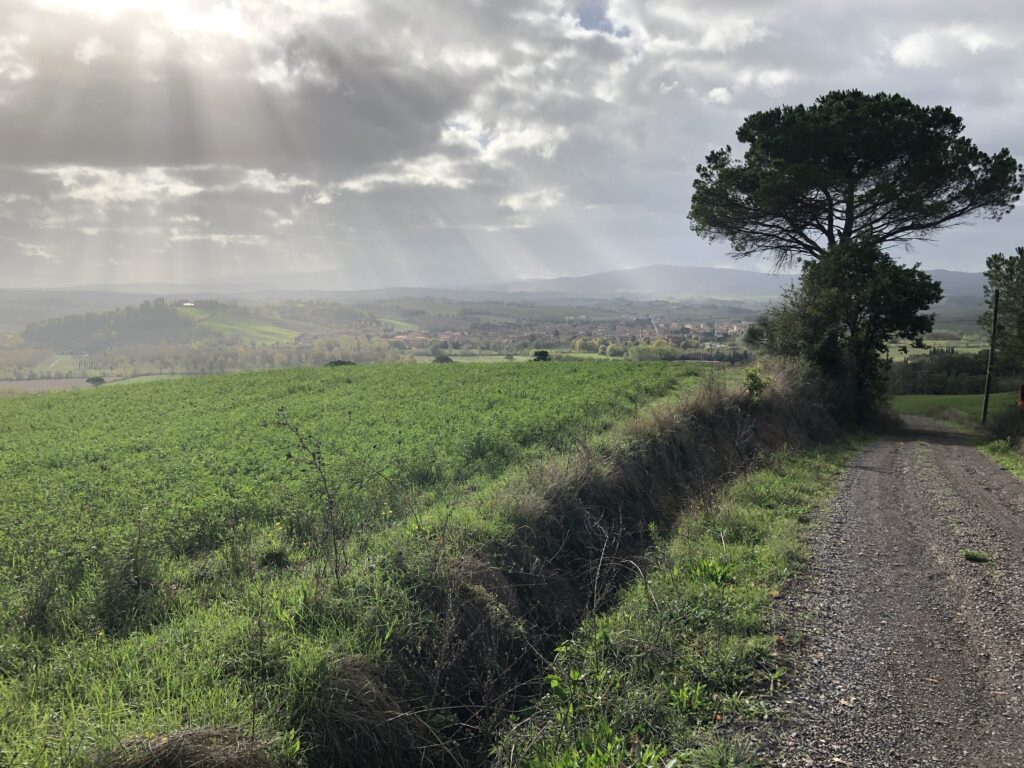
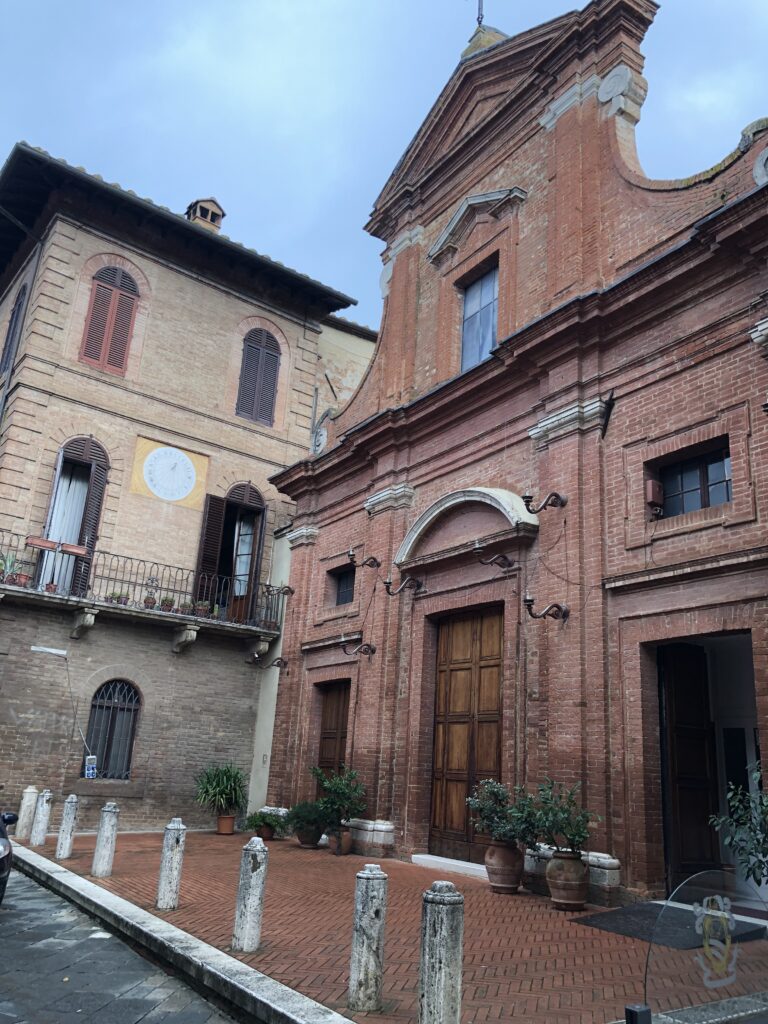

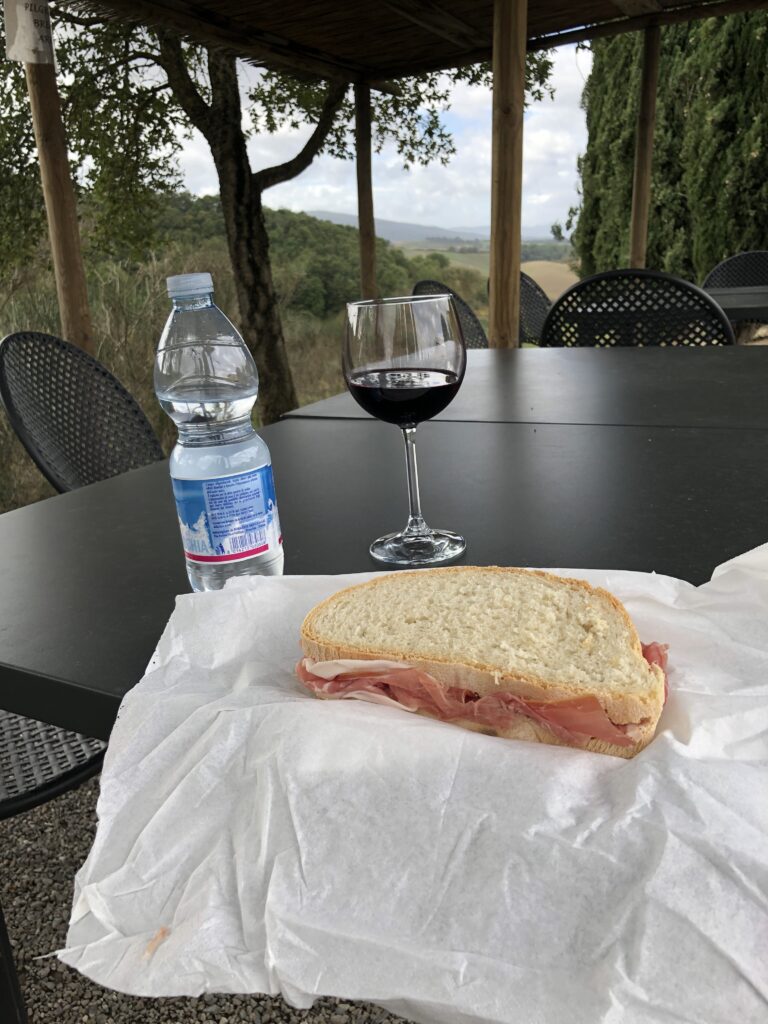

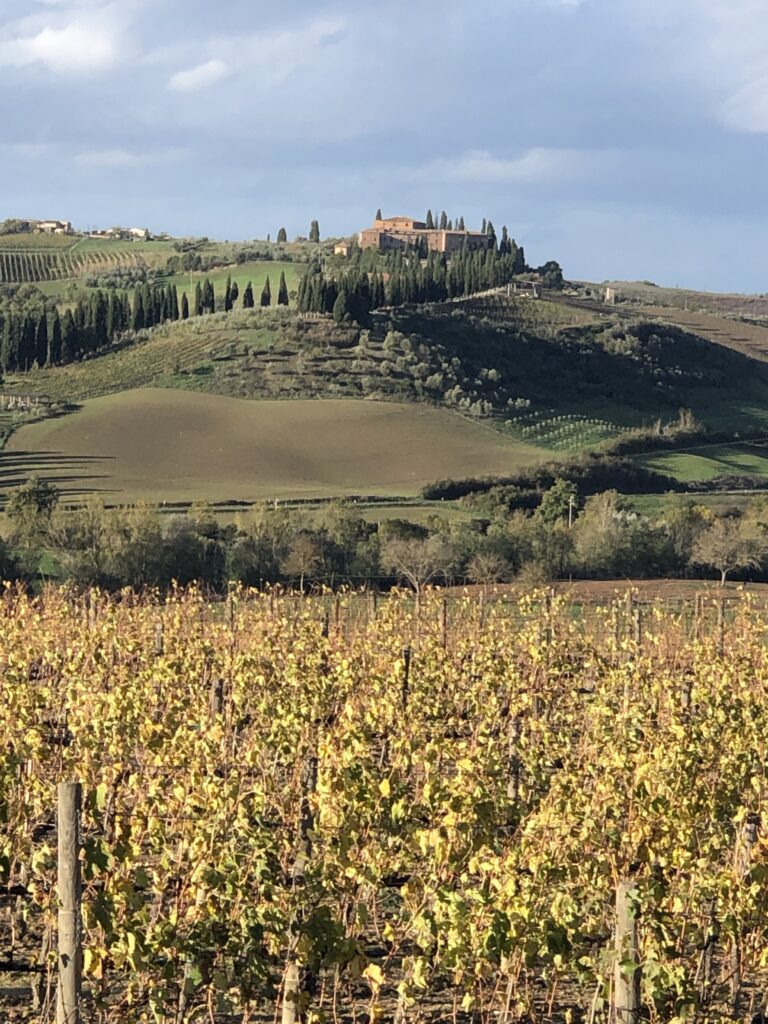
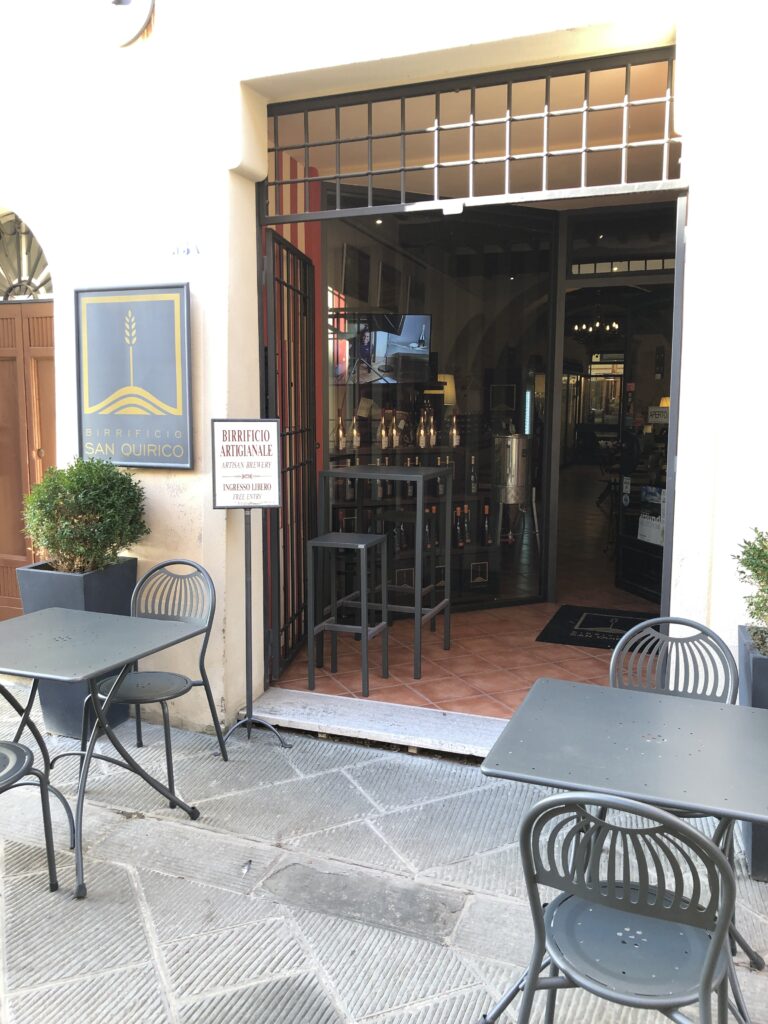
Day 9 San Quirico to Radicofani (33km/7hrs)
An epic stage as you leave one of the most photographed towns in Tuscany continuing your journey through Val d’ Orcia, passing the famous town of Bagno Vignoni and it’s thermal baths, and continuing to another of the most photographed towns in Tuscany, Radicofani. The route is more than 30 km and the terrain is a bit more hilly than the previous stages but still quite moderate. For the most part, the hiking continues to be through rolling hills and green fields but now you are following the ancient route to Rome along the Via Cassia. you’ll cross or be near the modern state road SS 2 which follows the path several times. This is the last section of the Via Francigena that is entirely in Tuscany. As there is significant elevation gain particularly as you approach Radicofani, make sure to look back from time to time for some incredible views of the Val d’ Orcia. Once in Radicofani, spend some time exploring the ancient fortress which dominated the view of your approach. At the heart of the village is Piazza S. Pietro and for a better than average and fairly cheap meal try the wine bar AI Tocco located within the Piazza. For a different experience, visit the very quaint Piazzetta del Teatro and try Pane e Companatico for a great Panini. Check out the cool Torre dell’Orologio (clock tower) in the center of town and visit the two churches on either side of town to see the unique wooden statues located in both. And be certain to read up on Ghino di Tacco, an historic figure from the late 1290’s who became known as a gentlemanly pirate, or Robin Hood of sorts, while in town.
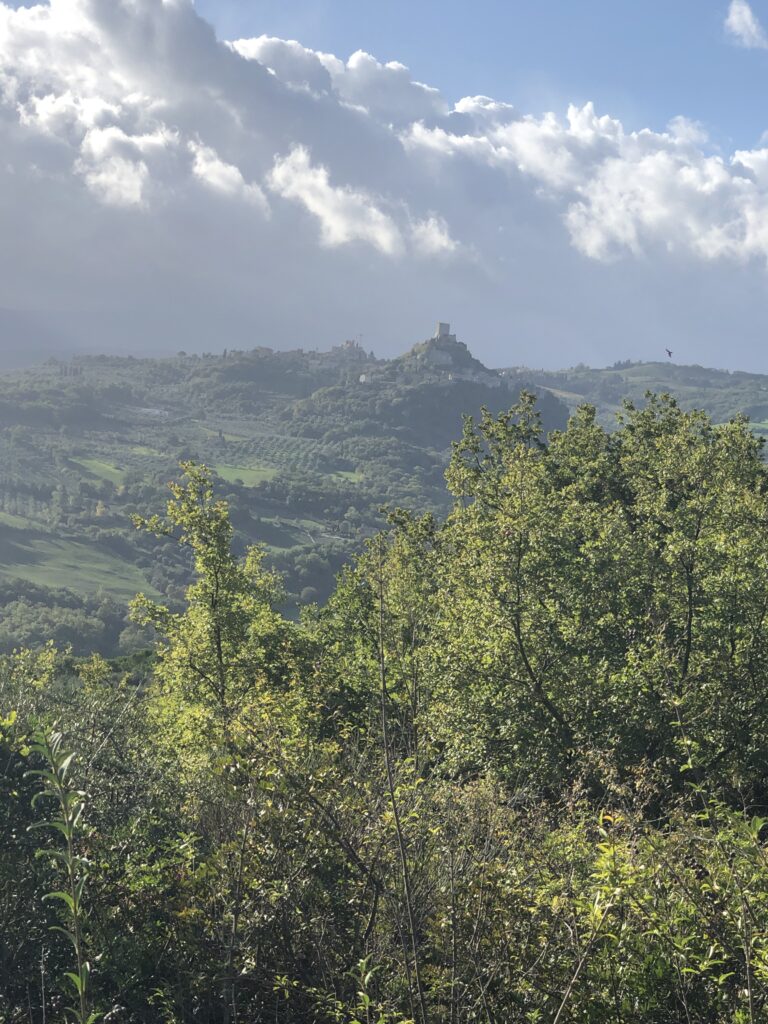
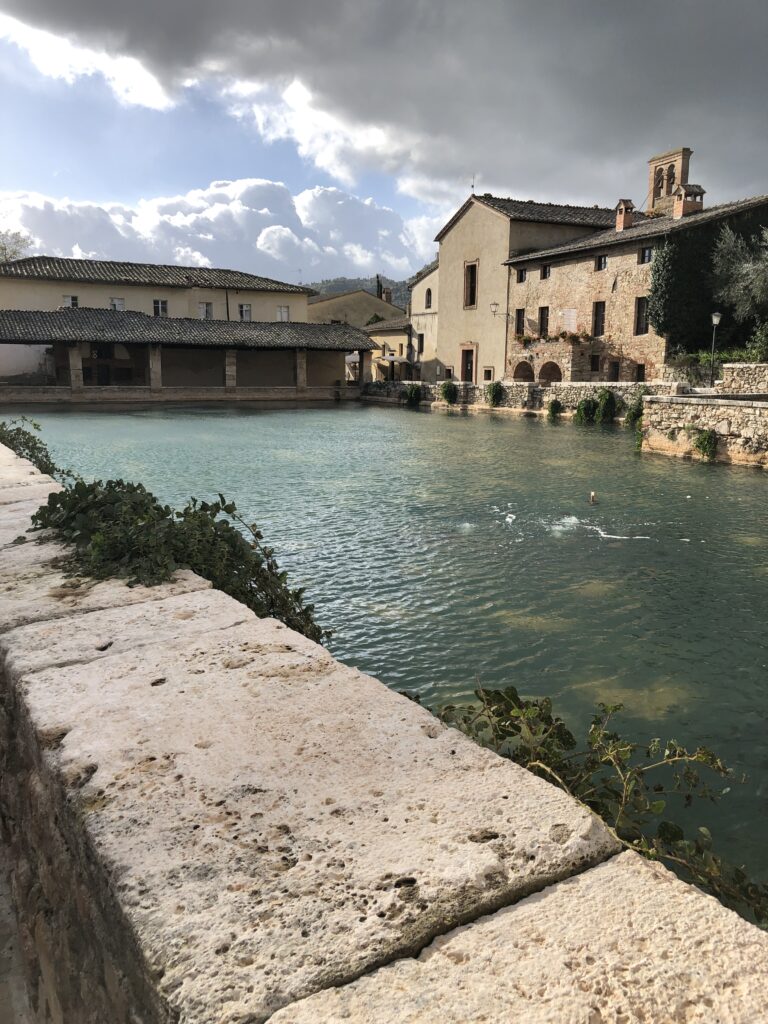
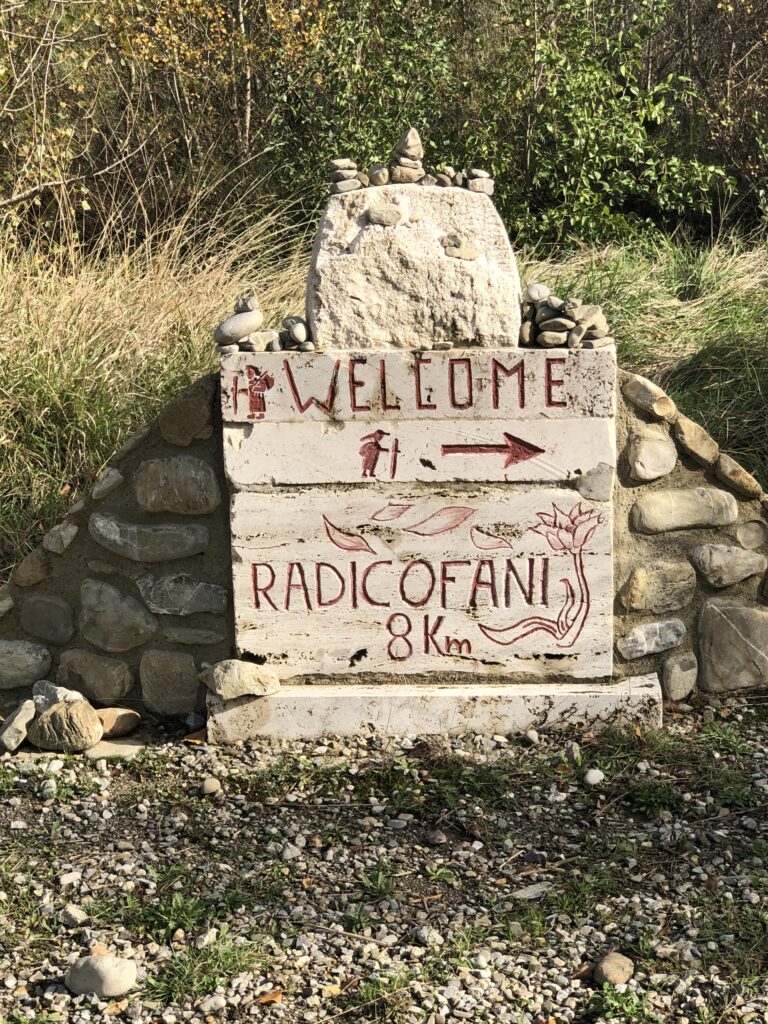
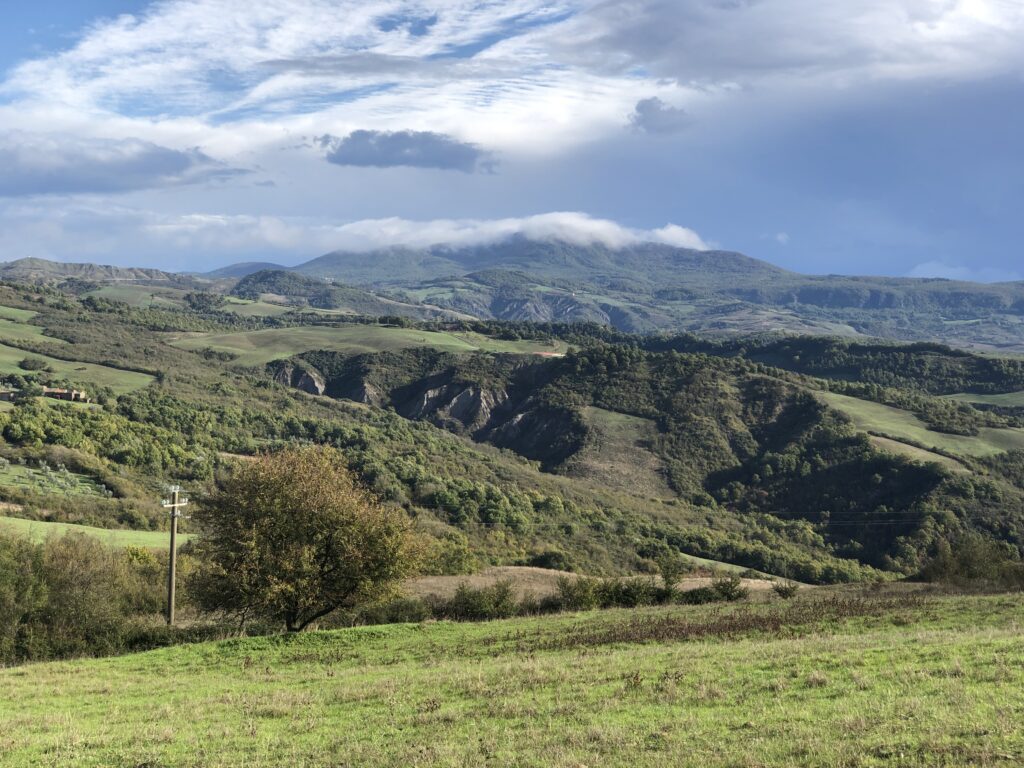

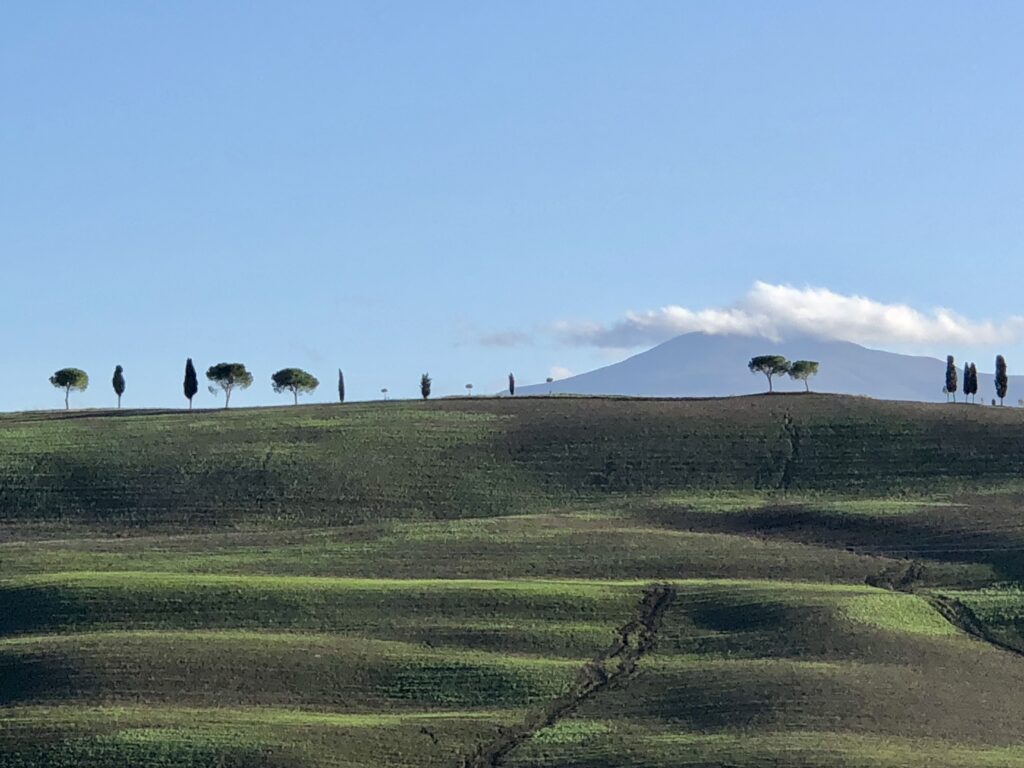
Day 10 Radicofani to Acquapendente (32km/7hrs)
Today you’ll be leaving Tuscany and entering the region of Lazio. The first part of your journey (10 km) has some of the best views and picture opportunities of the entire route. You will get your first glimpses of Lake Bolsena, and you will notice the terrain changing slowly as you enter the region of Lazio. The new “Via Cassio” SS 2 becomes more prominent with some of the trail paralleling the road. The section is 32 km long and should take about 7 hrs to complete. An ancient volcano, Mount Amiata, now a lava dome about 20 km from Lake Bolsena, will also be visible. Pass through the towns of Ponte a Rigo and Centeno/Proceno before reaching Acquapendente. Ponte a Rigo is very small but has a cafe where you can grab a bite to eat. There is also a variant which splits off the original Via Francigina which adds a few more km’s to your trip but also gets you further from the SS 2. Centeno is also very tiny and is in the Municipality of Proceno. You can find a restaurant or two in Proceno but its a little ways off the Via Francigena. The last few km’s to Acquapendente via the traditional route run along the SS 2 and involve a road walk. The reward for walking along the SS 2 is your arrival in Acquapendente, the largest town you’ve seen for the last several days. Acquapendente loosely translates to “falling waters” and comes from the lakes, streams and falls, in the area. Nicknamed “The Green Jerusalem” Acquapendente has a great deal of historical significance with the key attractions being the San Sepolcro Cathedral which contains a stone stained with blood from the tomb of Christ, the Town Museum, and of course another wonderful castle to visit, the Castle of Torre Alfina. Accommodations and choices of “eats” are plentiful. For a good post hike brew and a slice of pretty good pizza, stop in at Bar Natale located on the corner of the main square (Via Guglielmo Marconi 2).
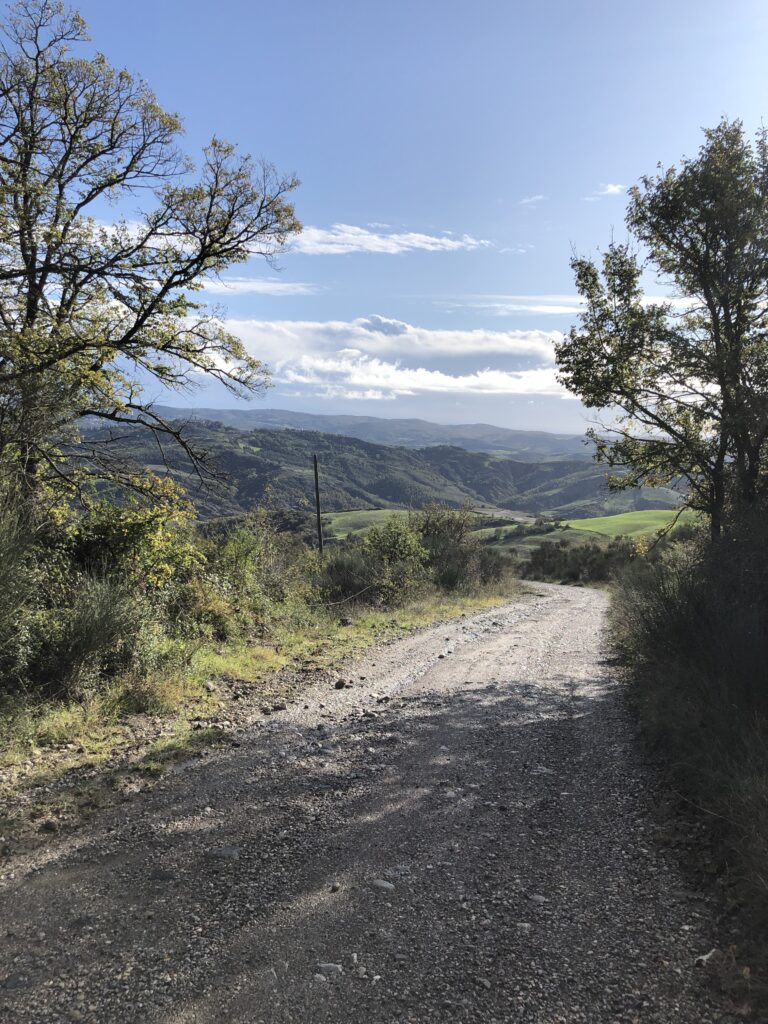



Day 11 Acquapendente to Bolsena (24km/5hrs)
The last segment takes you the final 24 km’s to Bolsena. This stage is the first that is contained entirely in the Lazio region and it’s quite varied. The first several km’s are primarily a road walk until the trail takes you South to San Lorenzo Nuovo through miles of meadows and fields. You will be at the highest point of today’s trek when you arrive in the town, and along with glimpses of Lake Bolsena, San Lorenzo Nuovo makes a great place for a lunch break before heading down to Bolsena and the lake. Trattoria Griglieria lo Spuntino (Via de Acquapendente 17) was a great find. Great food, cheap, convenient and run by really nice folks who will give you insights into Bolsena and the surrounding area. Leaving San Lorenzo Nuovo, the remainder of the hike is a pleasant walk via mostly rural roads that run through wooded areas past field of olive trees eventually reaching Bolsena. The five or six hour hike from Acquapendente should leave ample time to take a look around Bolsena, find accommodation if you plan on spending the night, or for hoping the bus out of town if you’re moving on. Bolsena doesn’t have a train station but the buses run on time and have routes to the nearest train station in Montefiascone. Catch the bus at Piazza Marconi which takes about 30 minutes to reach Montefiascone. The travel App “Moovit” seems to be a little better than Google Maps in this area.
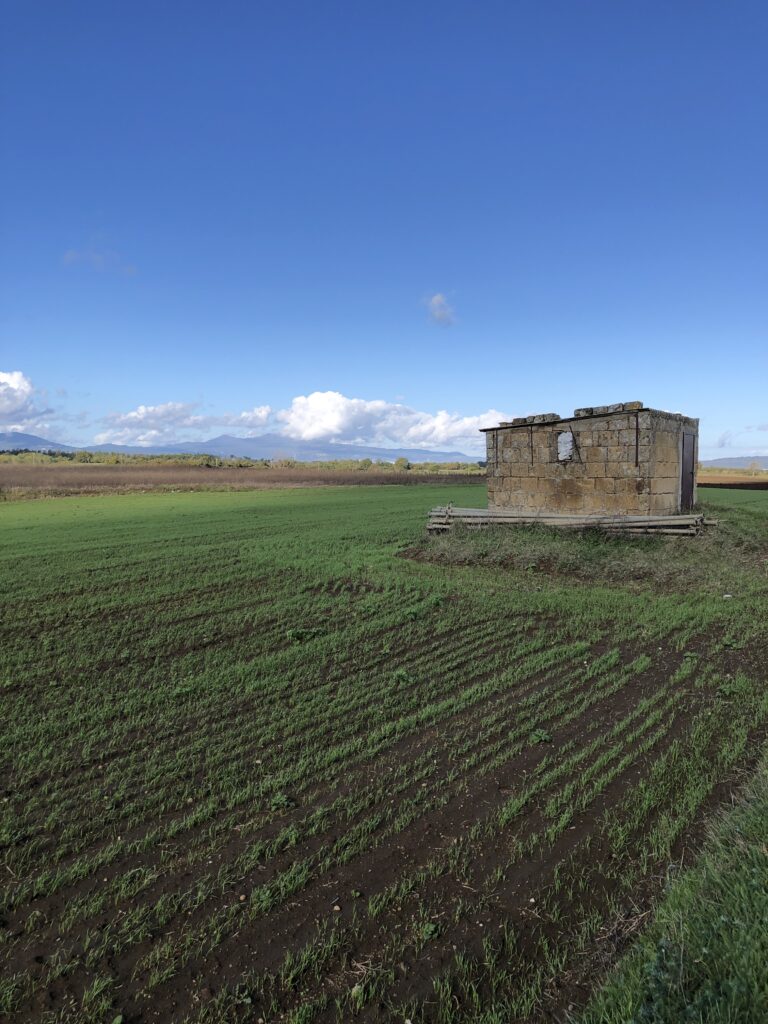
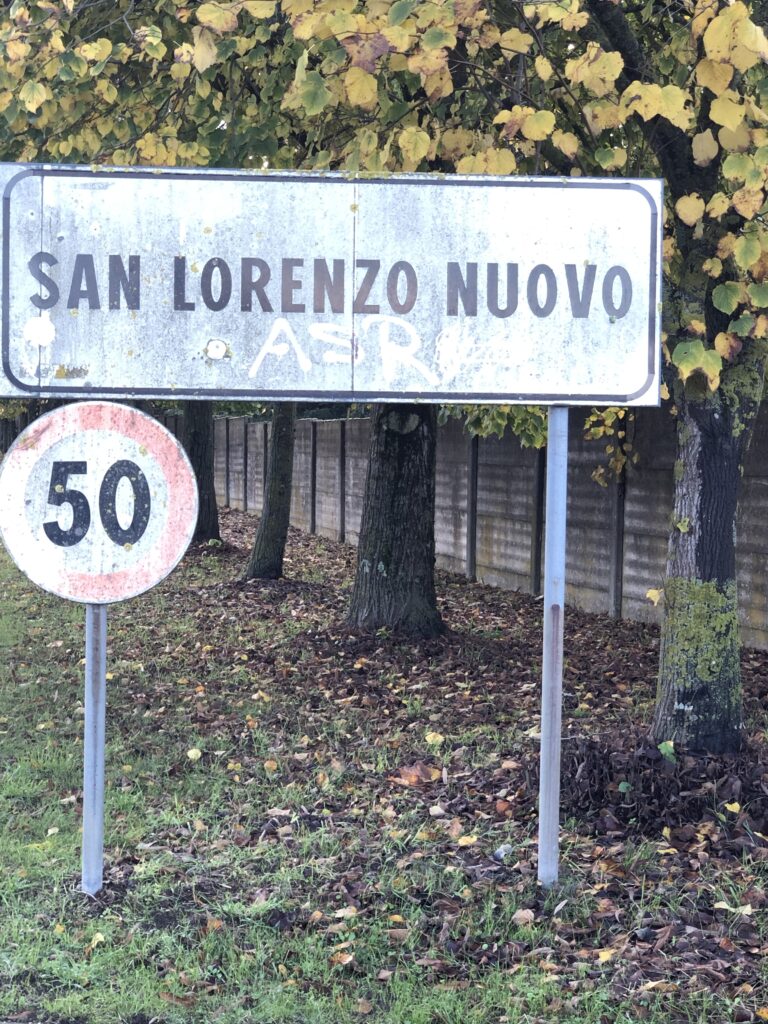
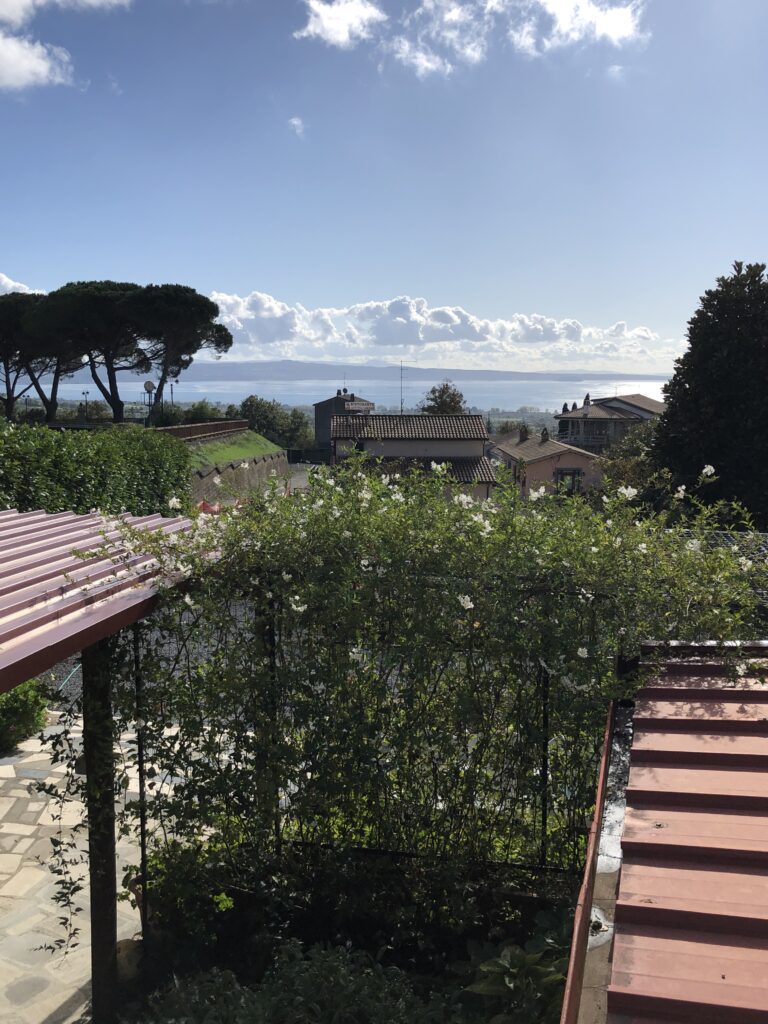
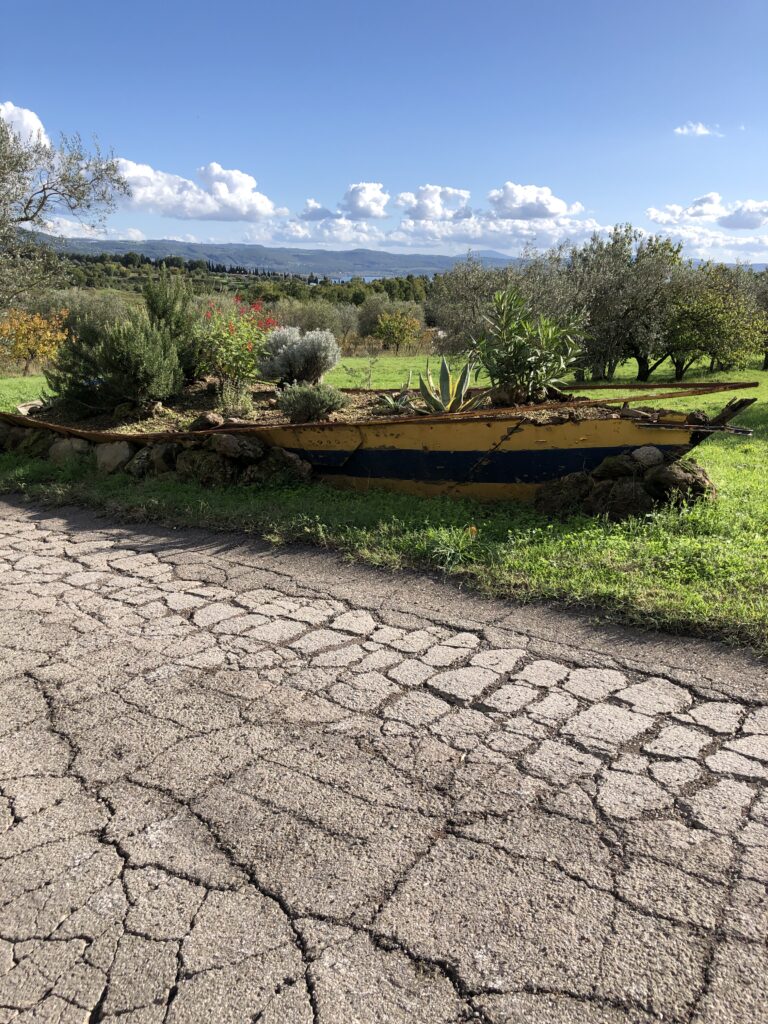
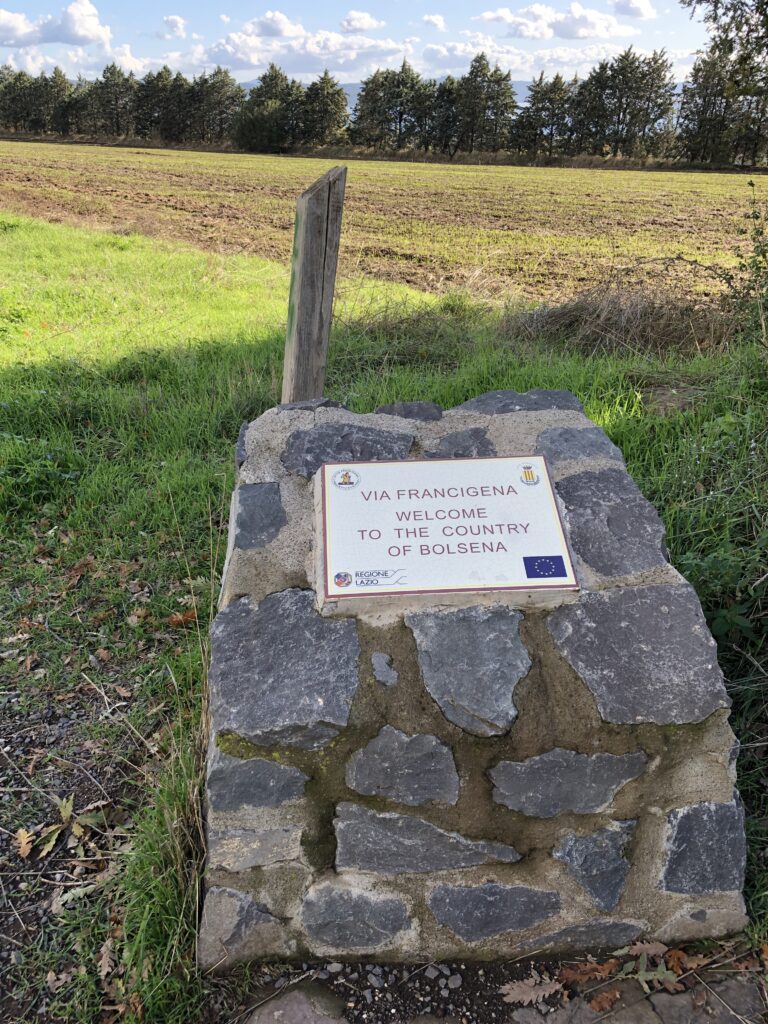

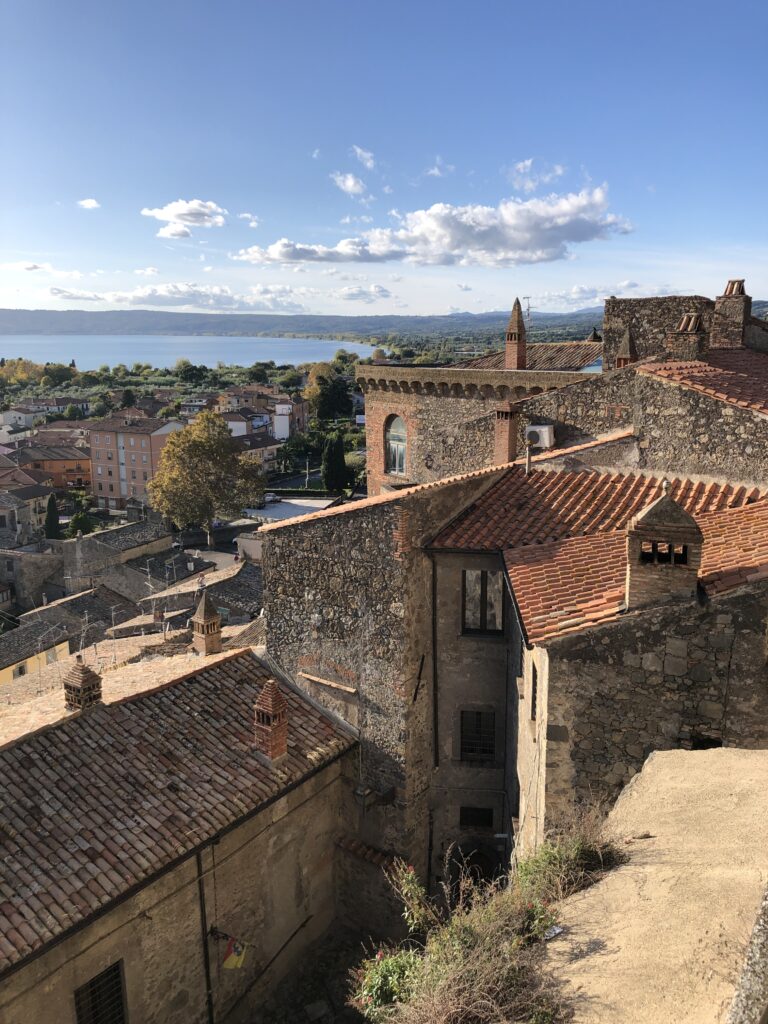
Hope you have a great hike! I’m looking forward to completing the remaining stages to Rome in the next year or so and will post about my adventure when I complete the trip. Until then, hike your own hike and have a beer or two for me!
